Exquisite chrysanthemums: perennial and annual varieties, propagation, care. Varieties and types of chrysanthemums
The bright colors that decorate the chrysanthemum garden can delight the eye all summer long. late autumn. At this time, other decorative garden plants Usually they have already finished flowering.
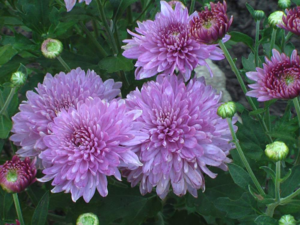
The unusual bitter aroma of multi-colored flowers distinguishes this plant from others. Lush chrysanthemums can be grown both in a greenhouse and outdoors on a personal plot.
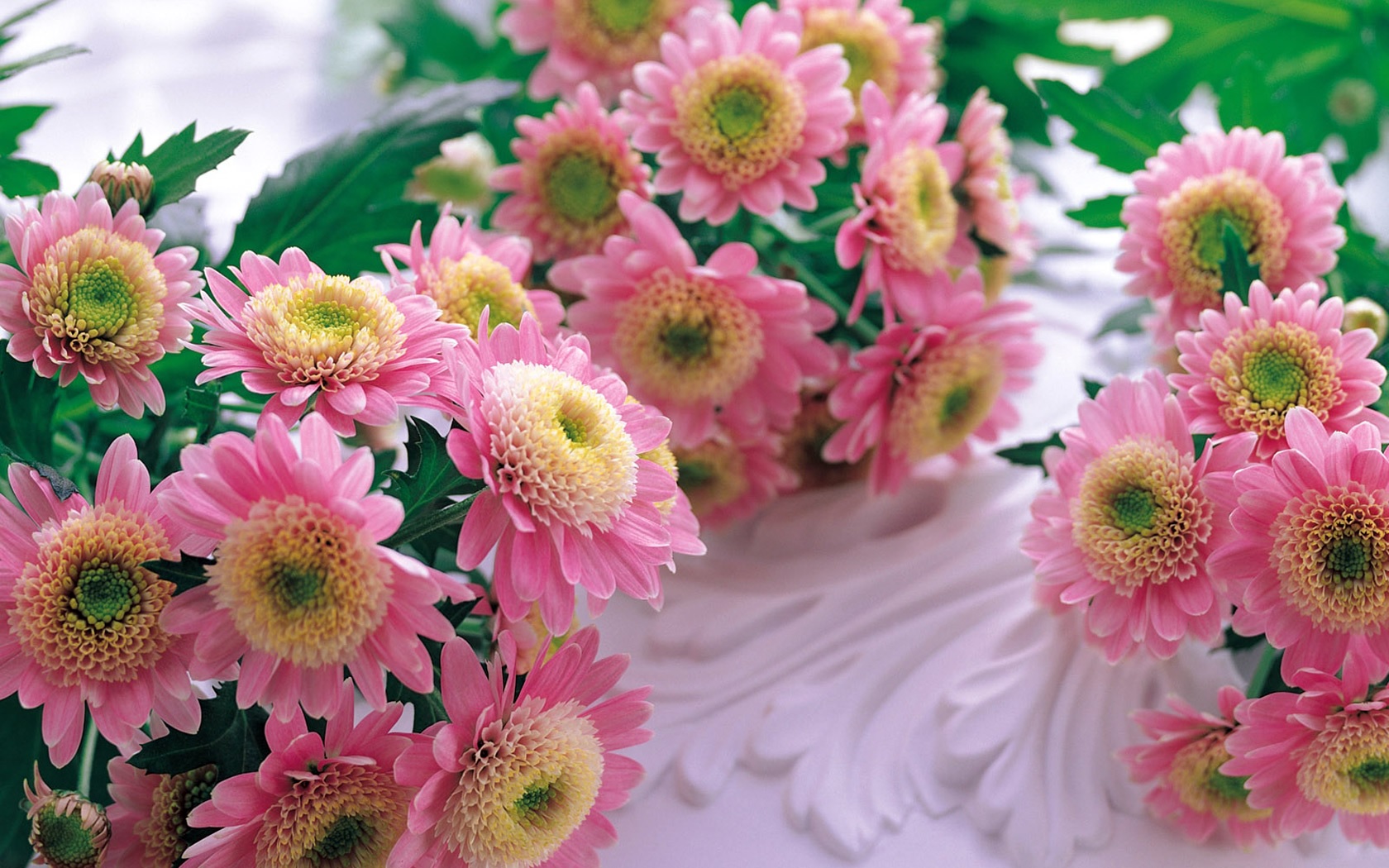
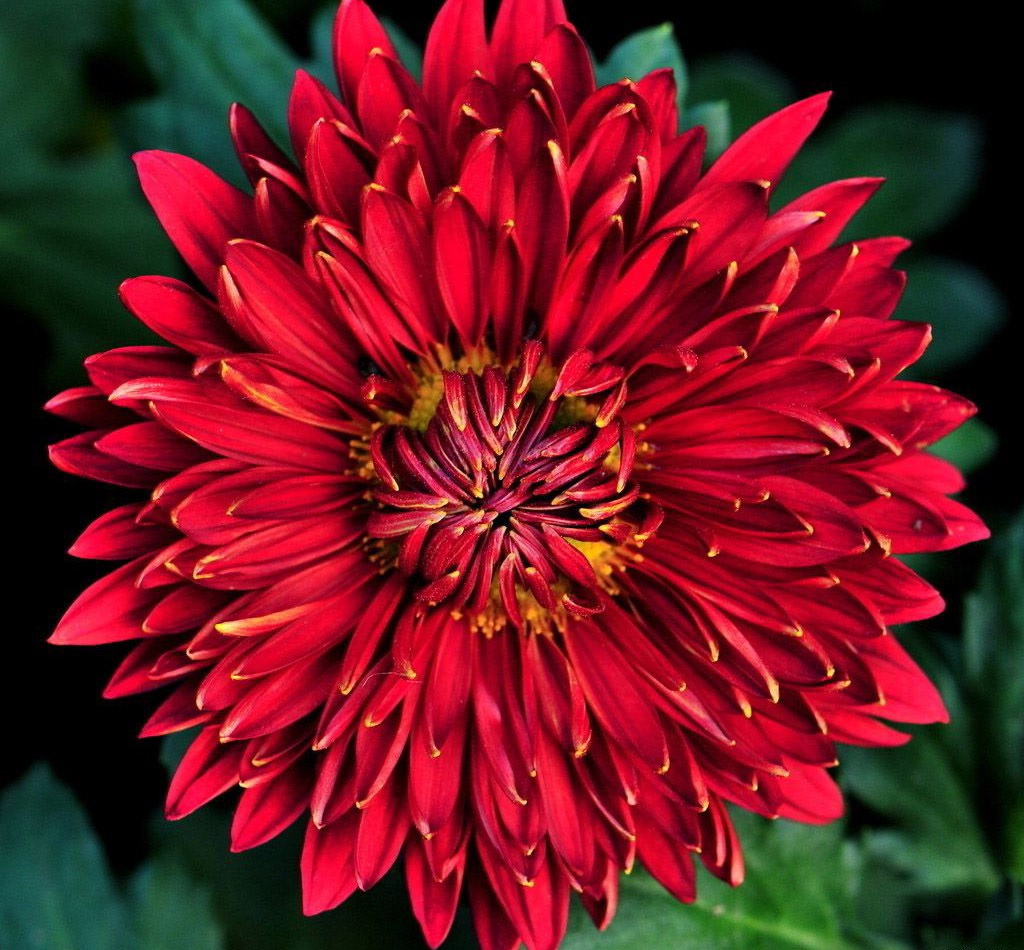
Garden chrysanthemums have several names, for example Chrysanthemum or Dendronthema. They belong to the Asteraceae or Asteraceae family. The name literally translates as “sun flower” or “golden flower”. This name owes its origin to the fact that most varieties have bright yellow petals.
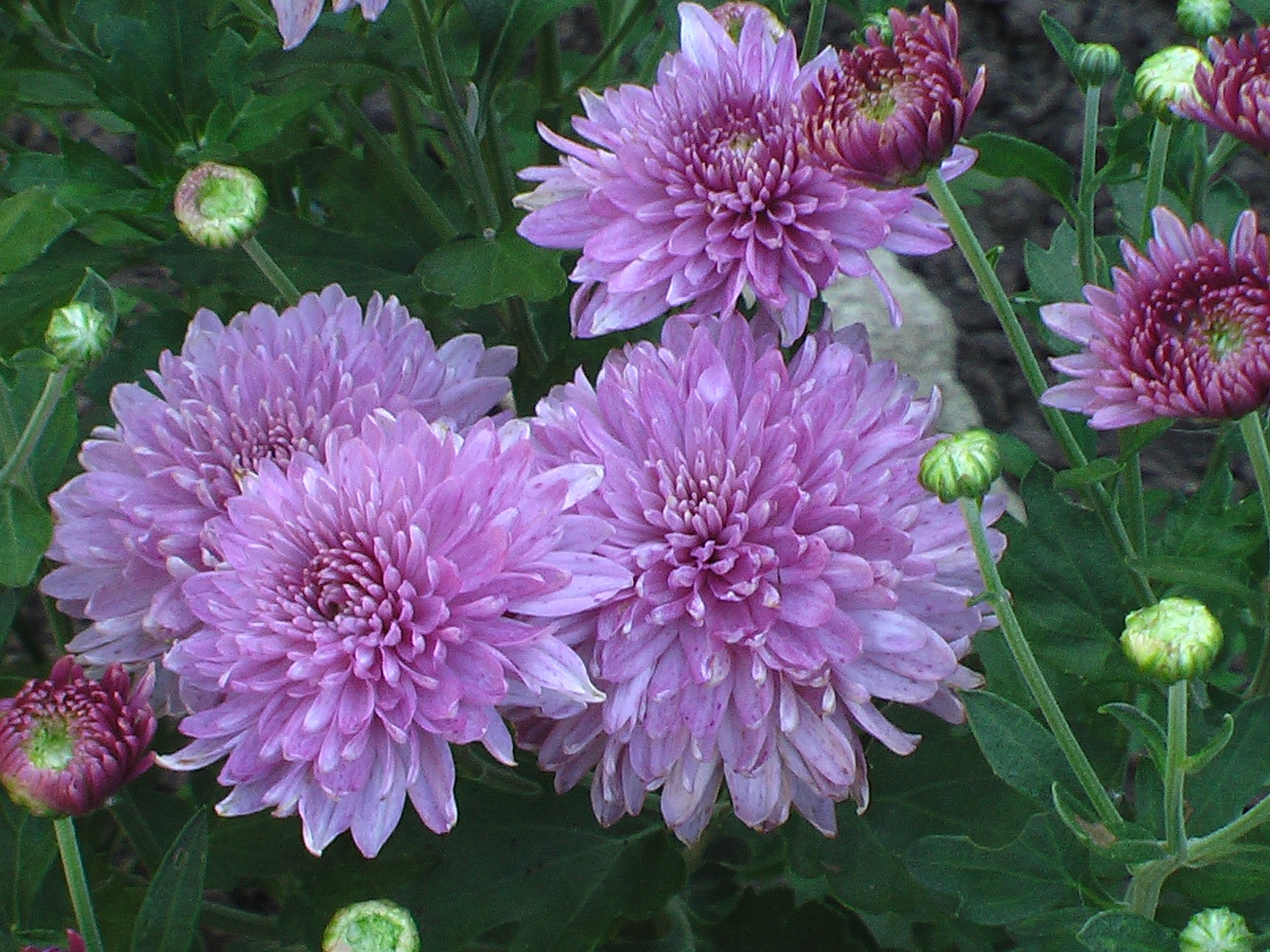
Varieties of this plant are divided into:
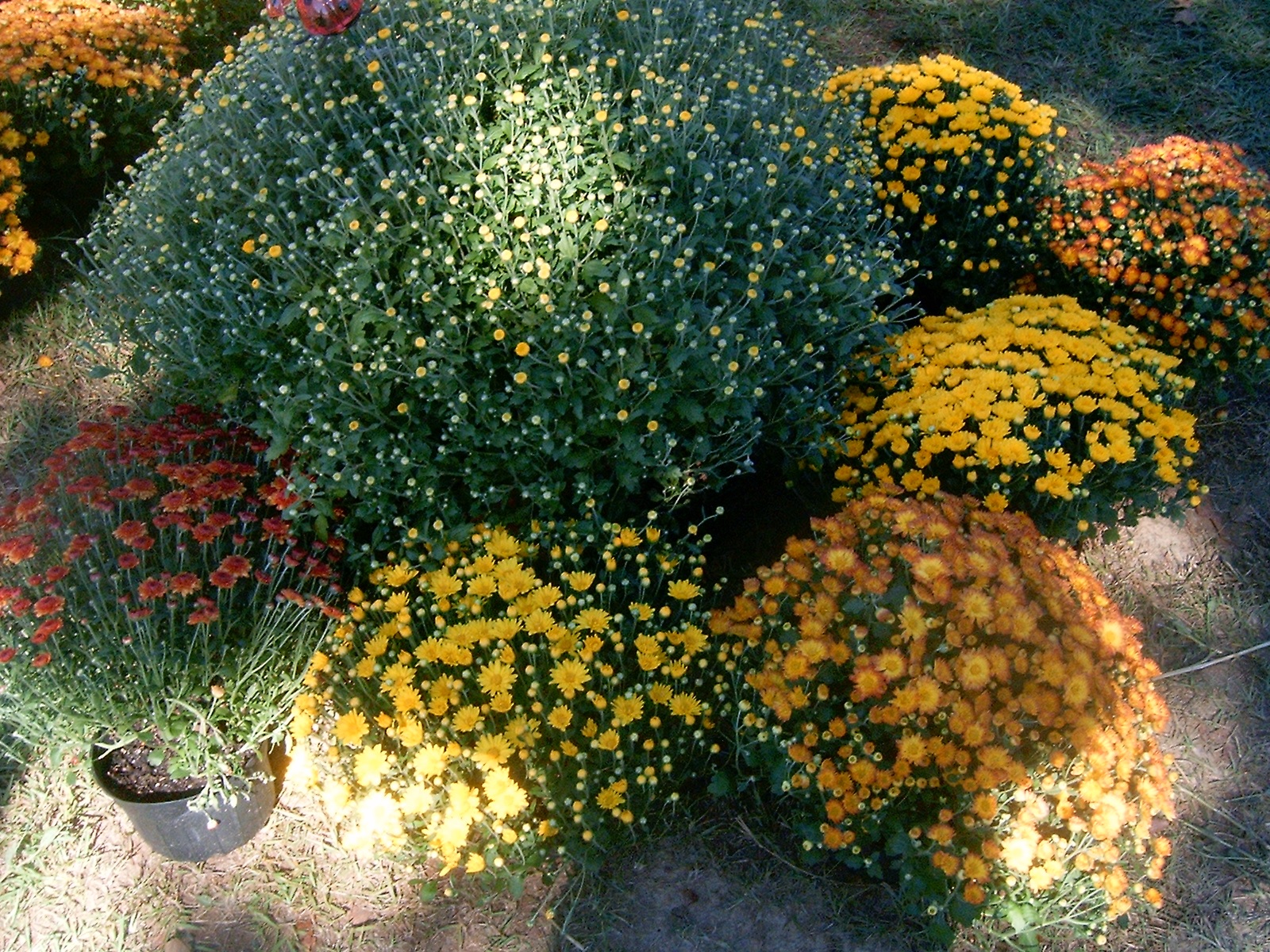
Plant height varies from 35 cm to 150 cm. The color range is also very wide:
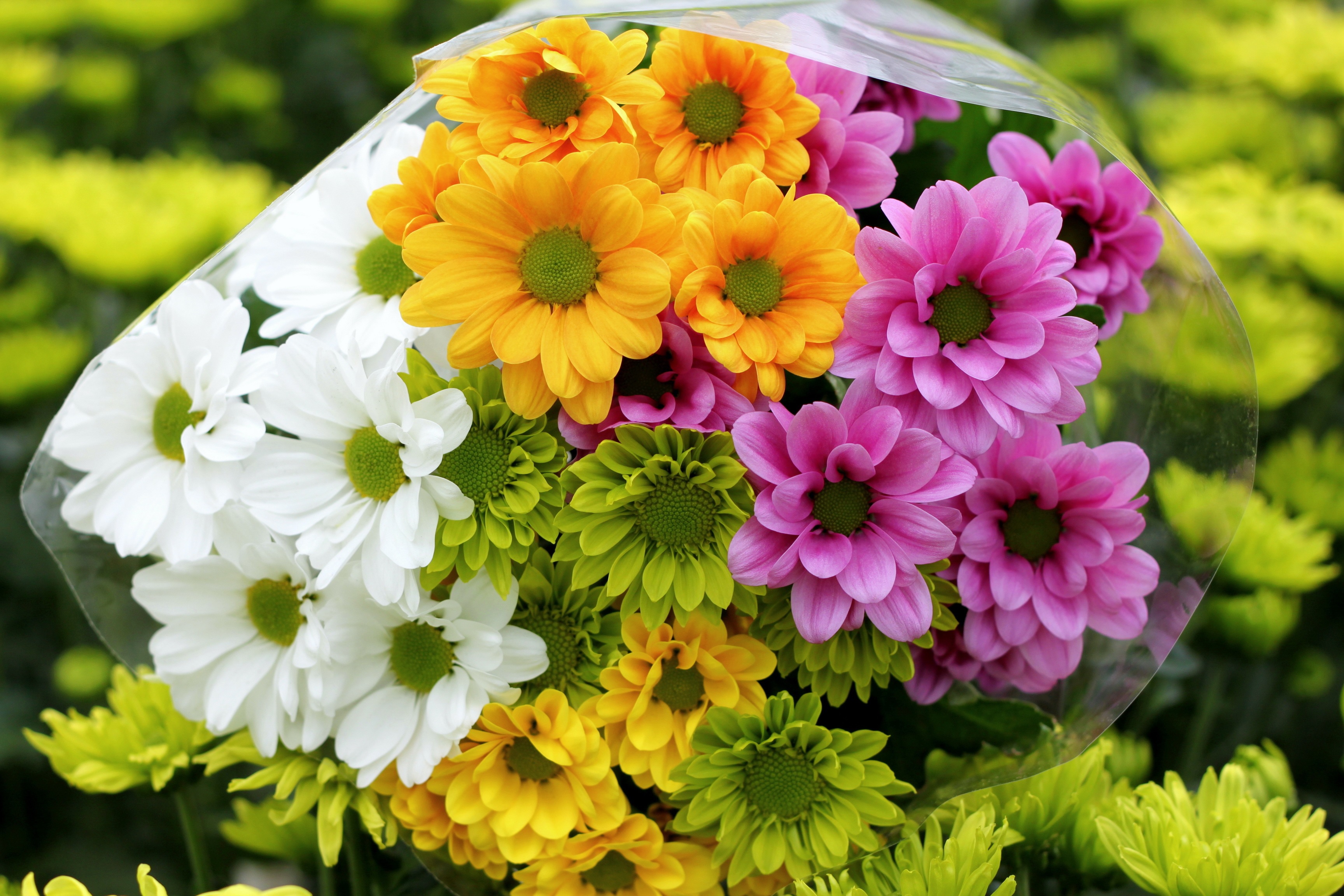
In addition, these colors can be divided into shades on the same bush.

The first chrysanthemums became known to man in ancient times. They came to us from the Far East. It is believed that this plant was first cultivated in China. It was grown there in pots already 3,000 years ago.
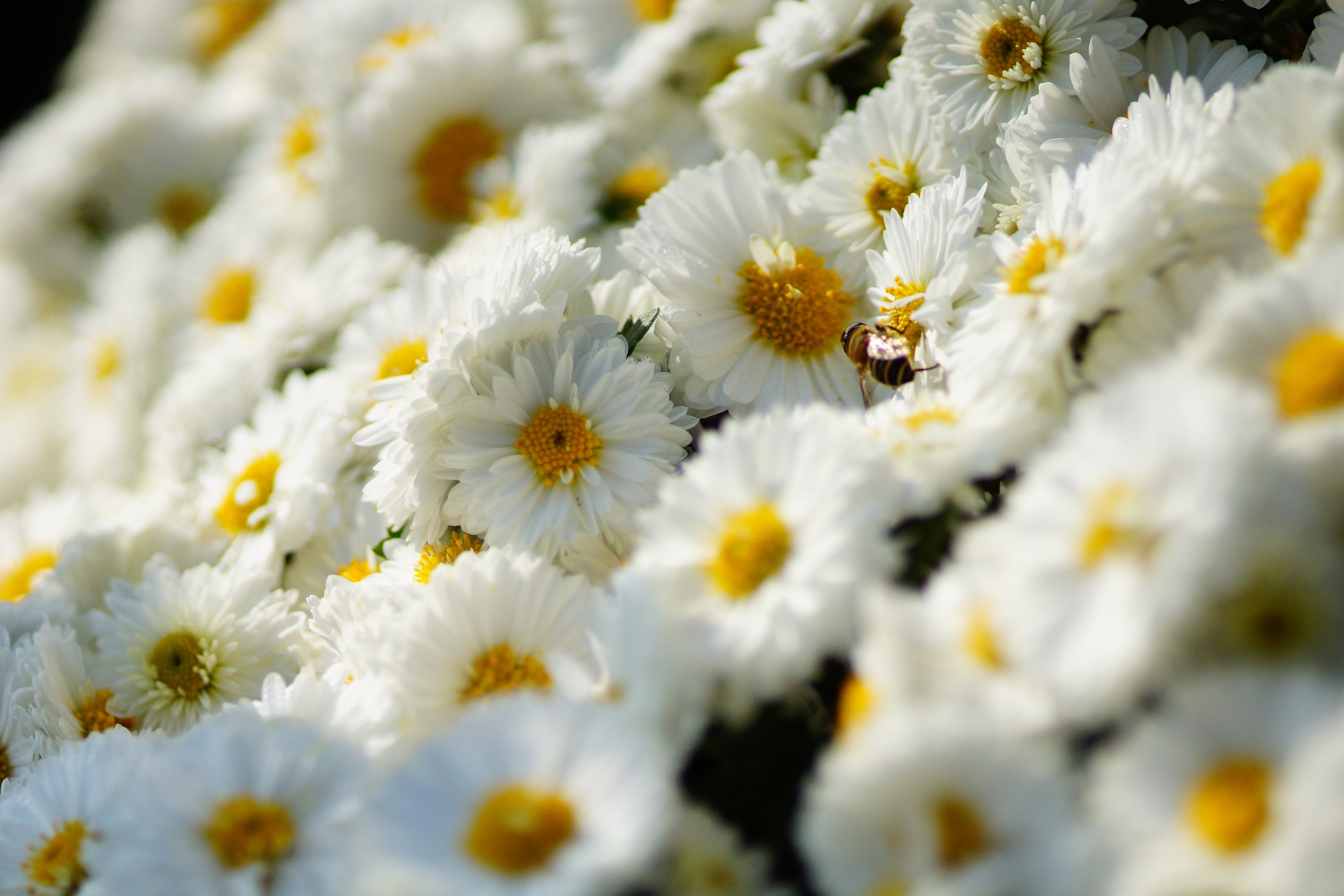
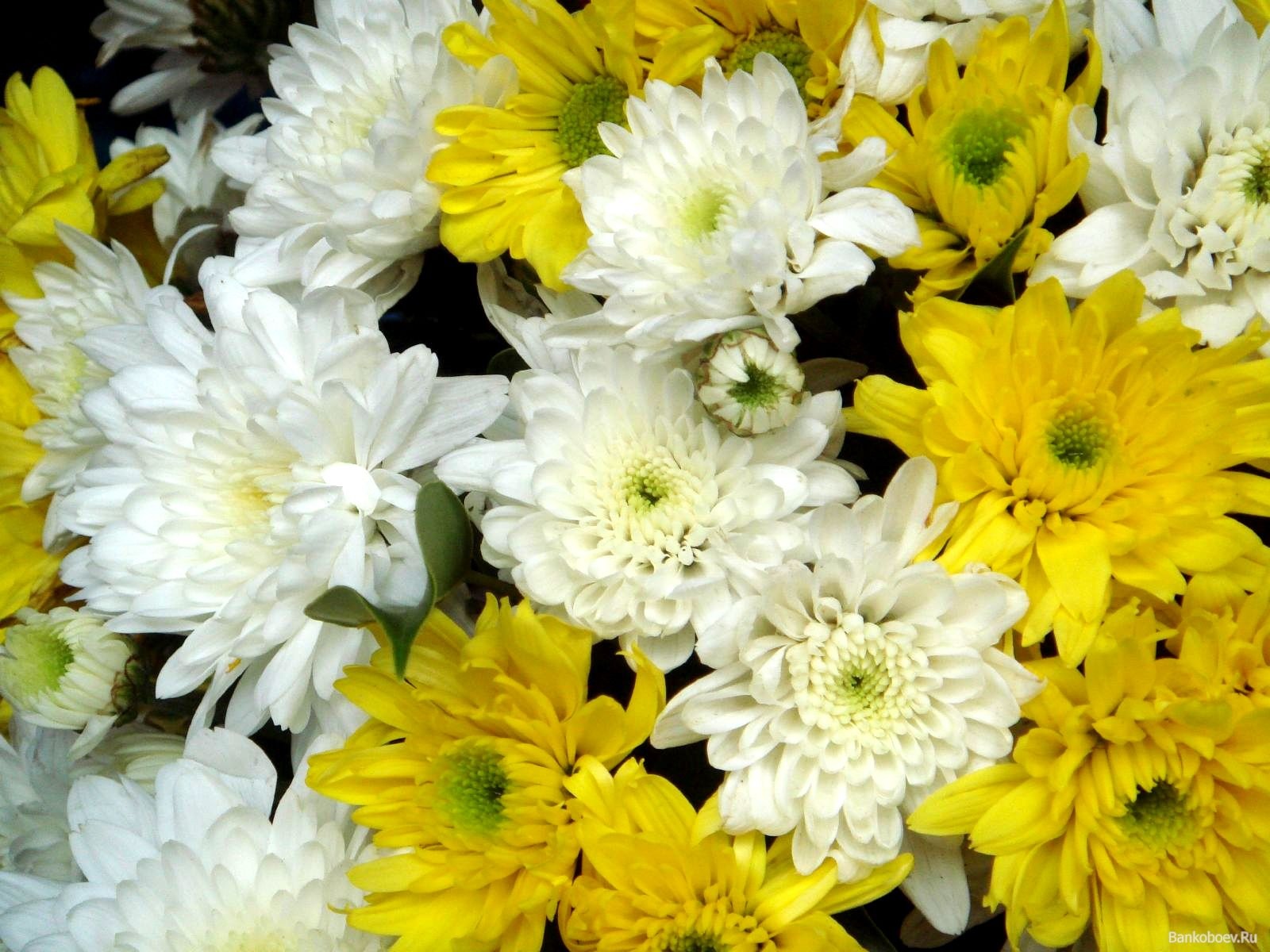
Arachnids were the first to be domesticated. They were used to make medical supplies and in cooking. Confucius himself mentioned this in his treatises. Later they began to be grown only for decorative effect, which these unique bushes possess.
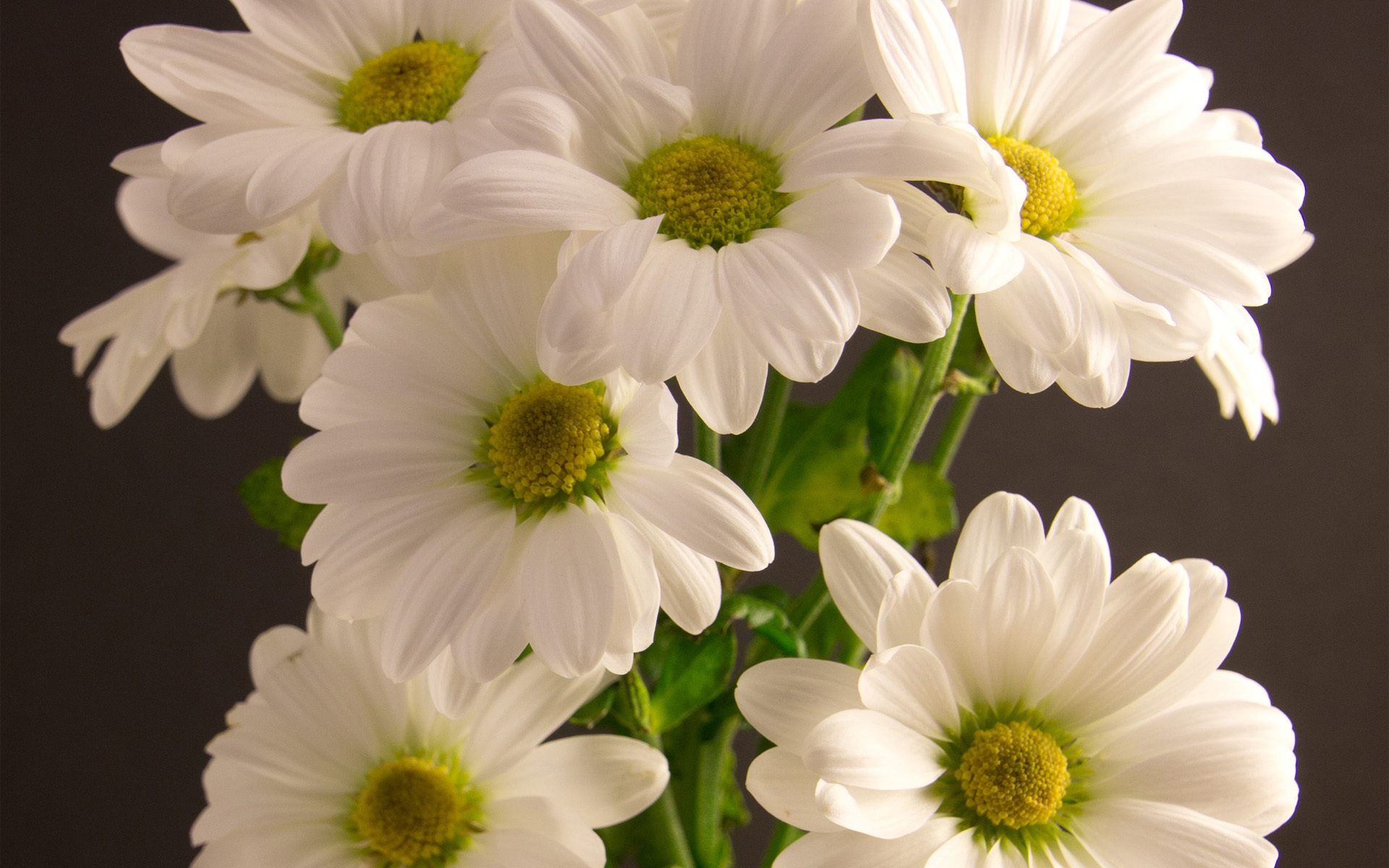
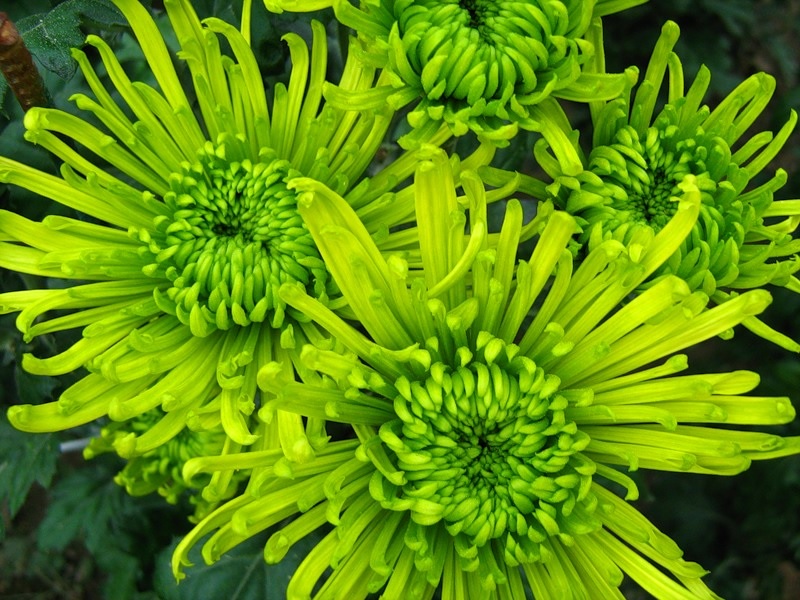
For the Chinese, chrysanthemum is surrounded by magical mystery. There are many beliefs associated with it.
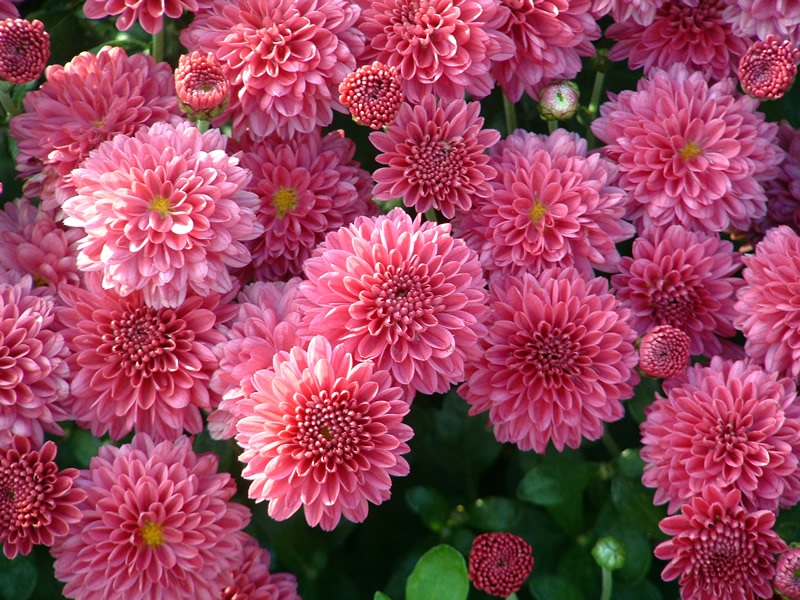
In 1802, already in Europe, the chrysanthemum genus was replenished with a dozen new varieties. In addition to large-flowered species, we have also become popular bush plants, used in landscape design.
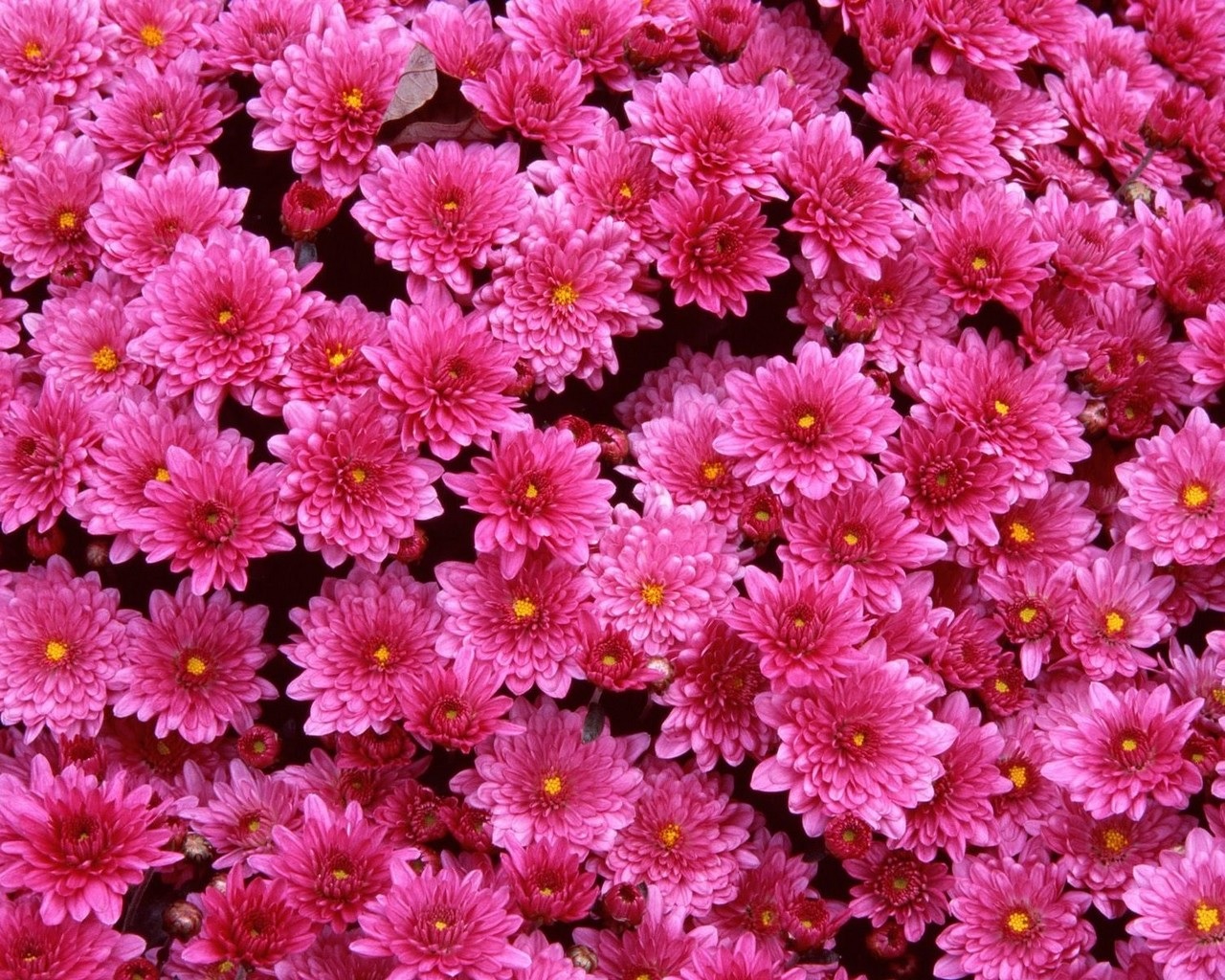
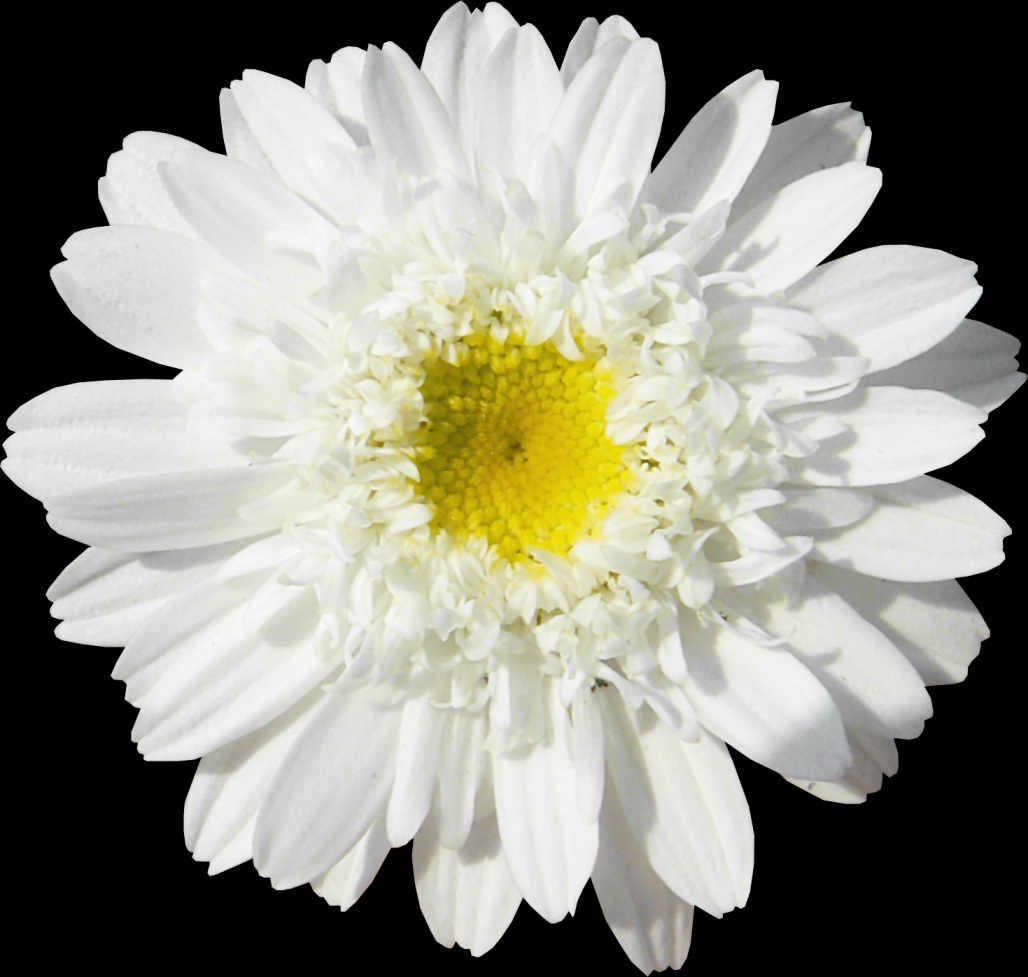
Elite cut varieties of chrysanthemums are distinguished by larger inflorescences. The symmetrical structure of the flower and harmoniously arranged petals are complemented by bright, fresh green foliage. The color of such plants is brighter and more saturated.
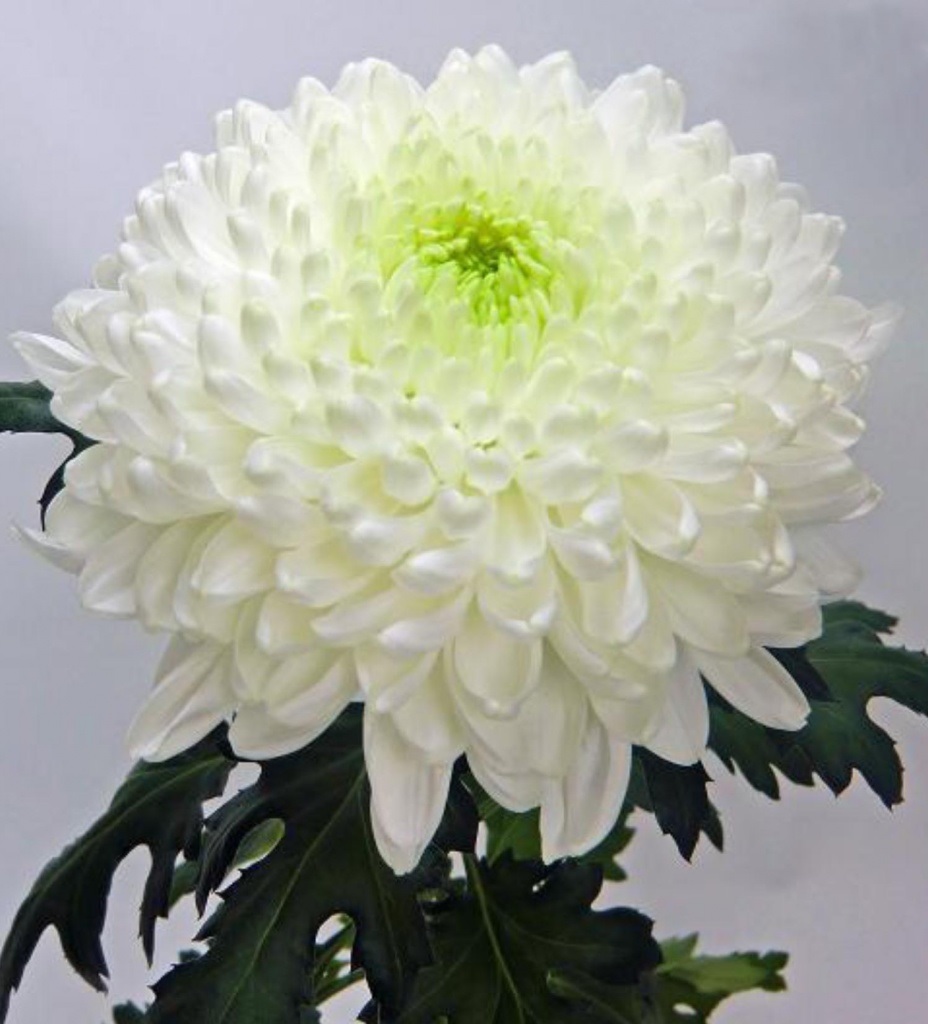
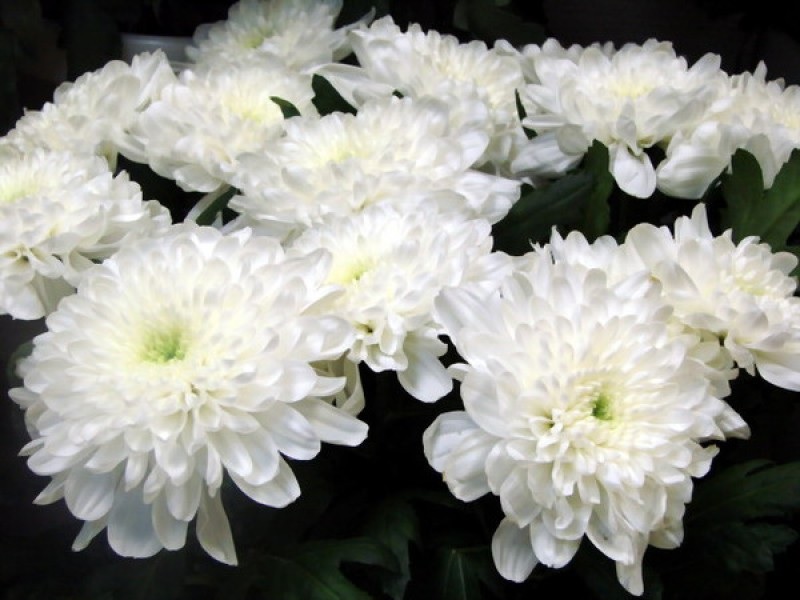
Chrysanthemums for growing in pots have more simple form. They look like small bushes dotted with small inflorescences. Moreover, any of the varieties during flowering looks amazing and captivates the eye.
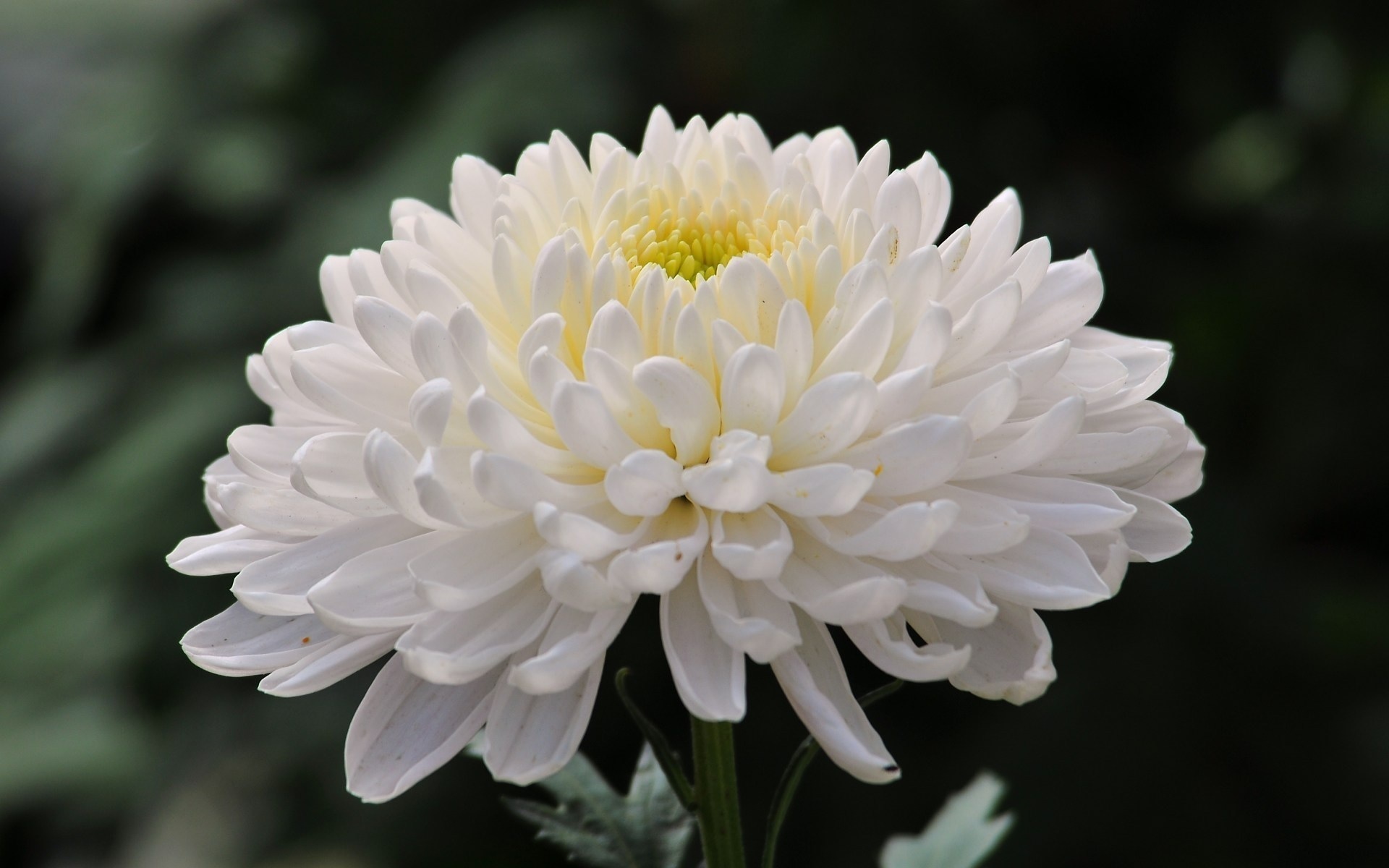
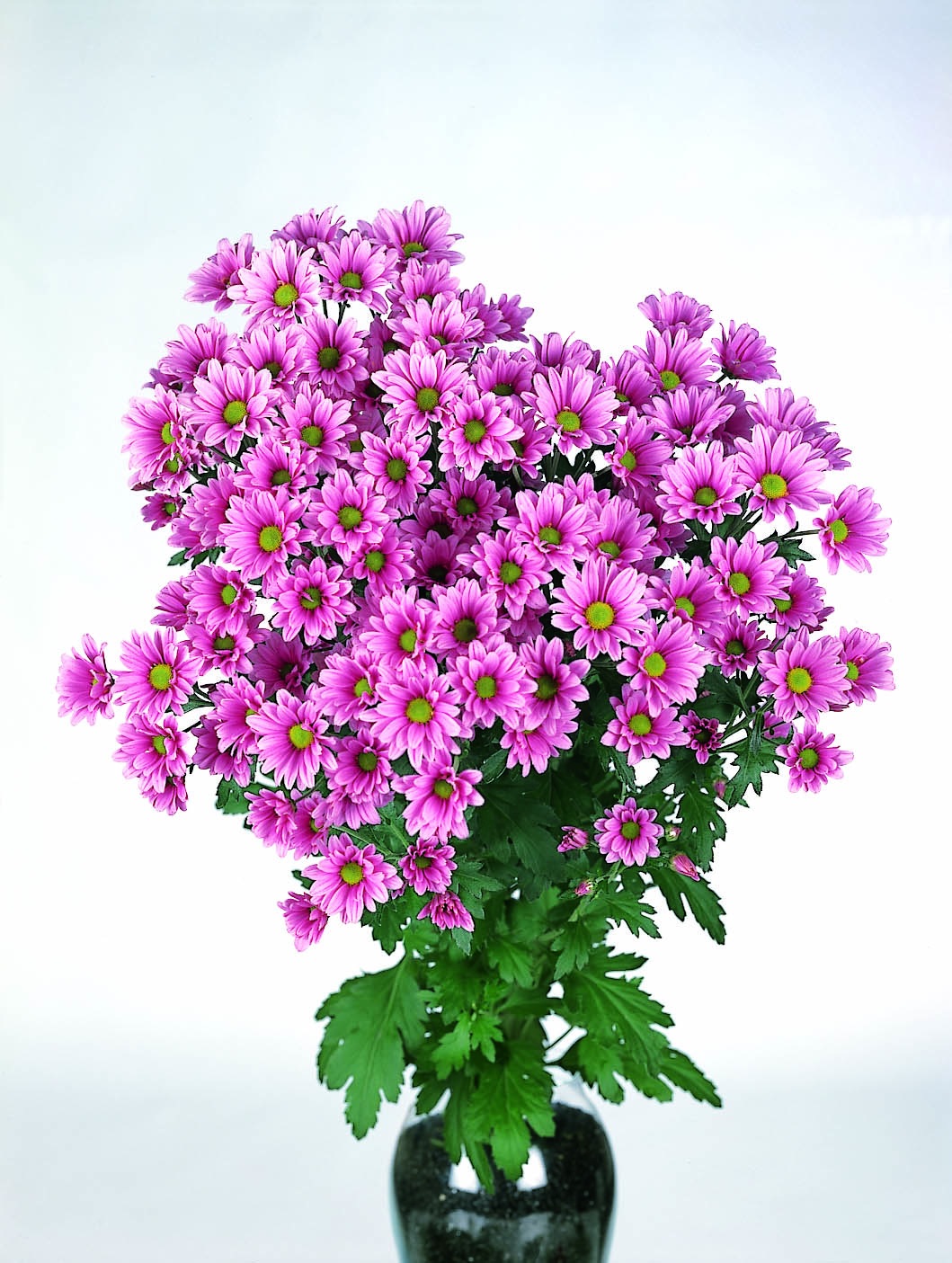
The task of a competent gardener is to select chrysanthemum varieties in such a way that the end of the flowering of one of them coincides with the beginning of the flowering of the other. Then the garden will be full of bright spots for a long time.
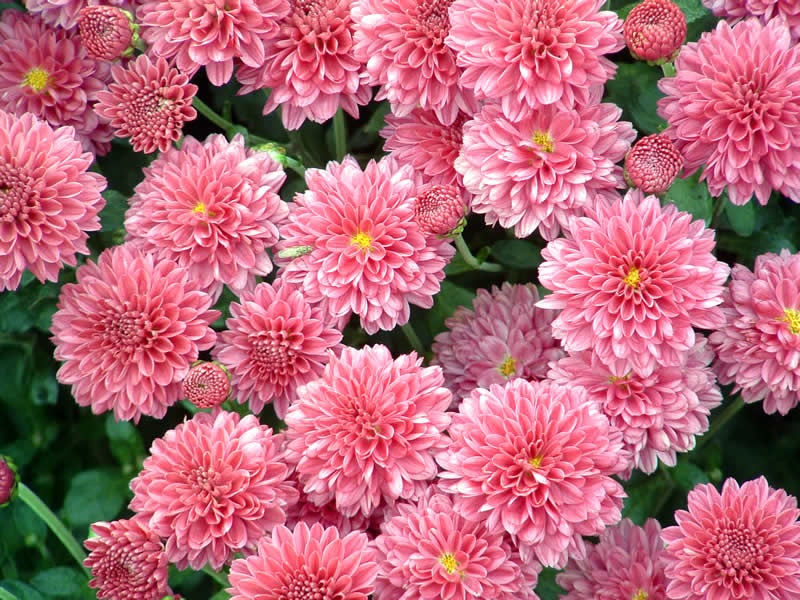

According to some data, there are now about 30 types of chrysanthemums. They are mostly distributed in the northern and temperate zones, as well as in most of Asia.
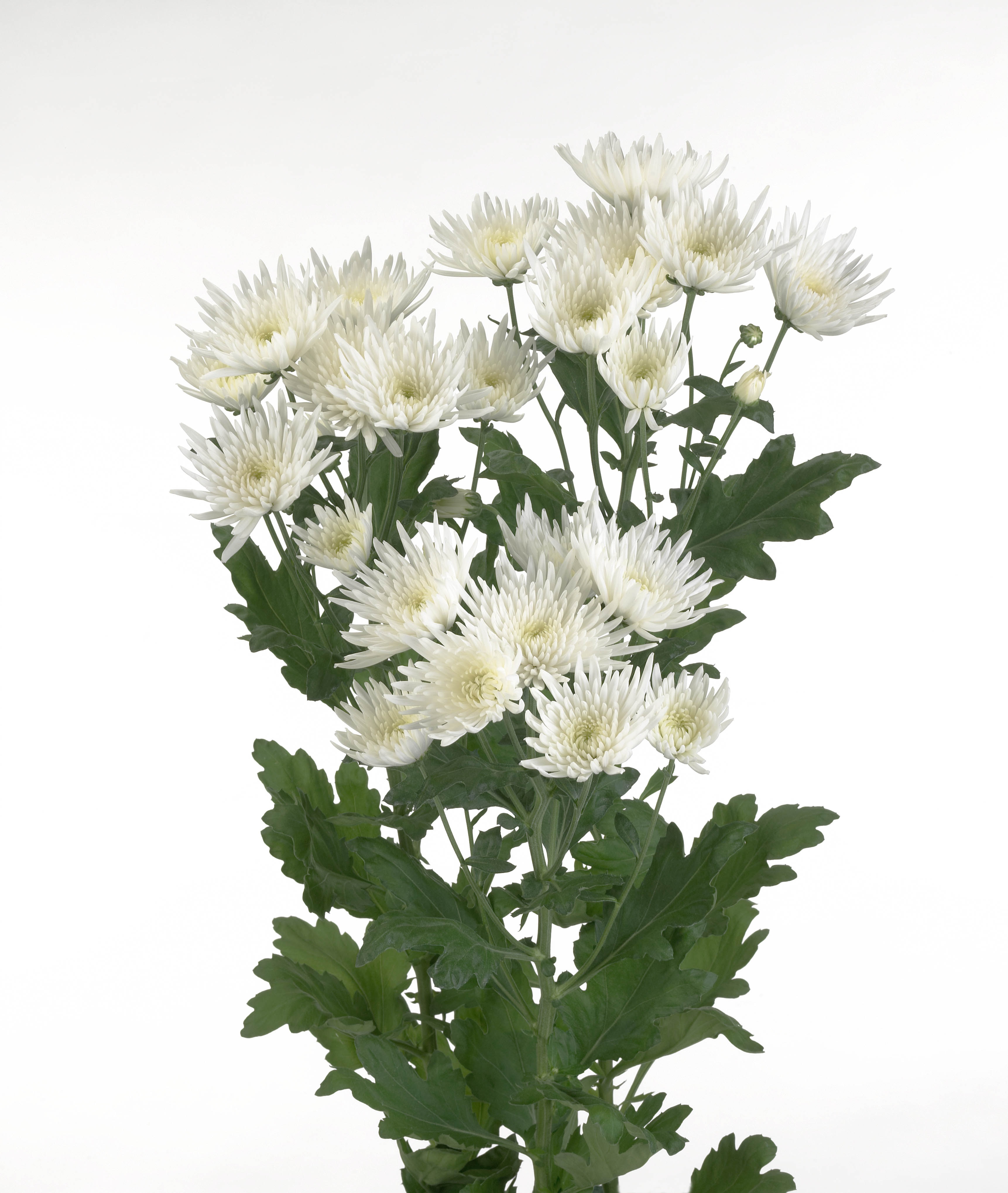
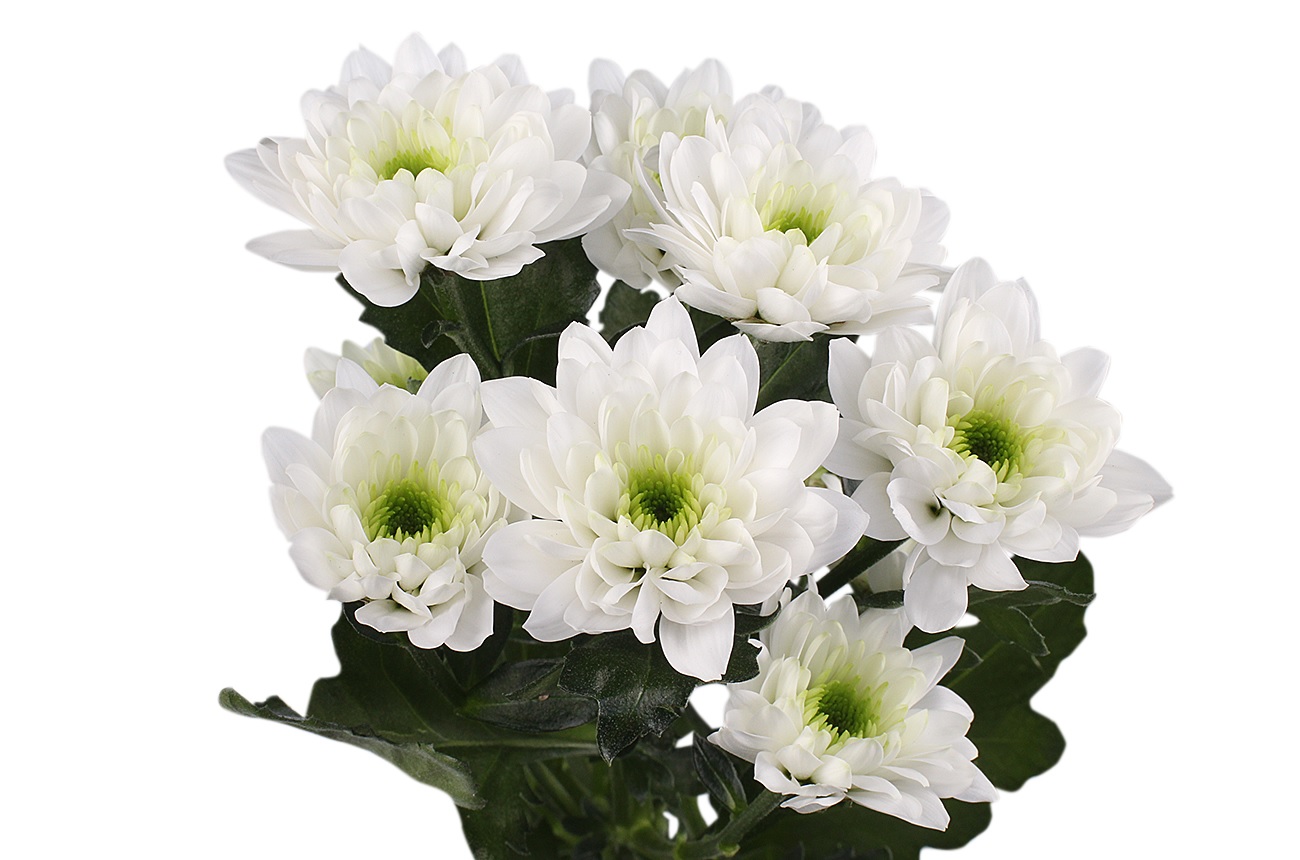
Most famous modern look The garden chrysanthemum was the result of crossing two species native to Asia. This is a small-flowered and large-flowered chrysanthemum.
![]()
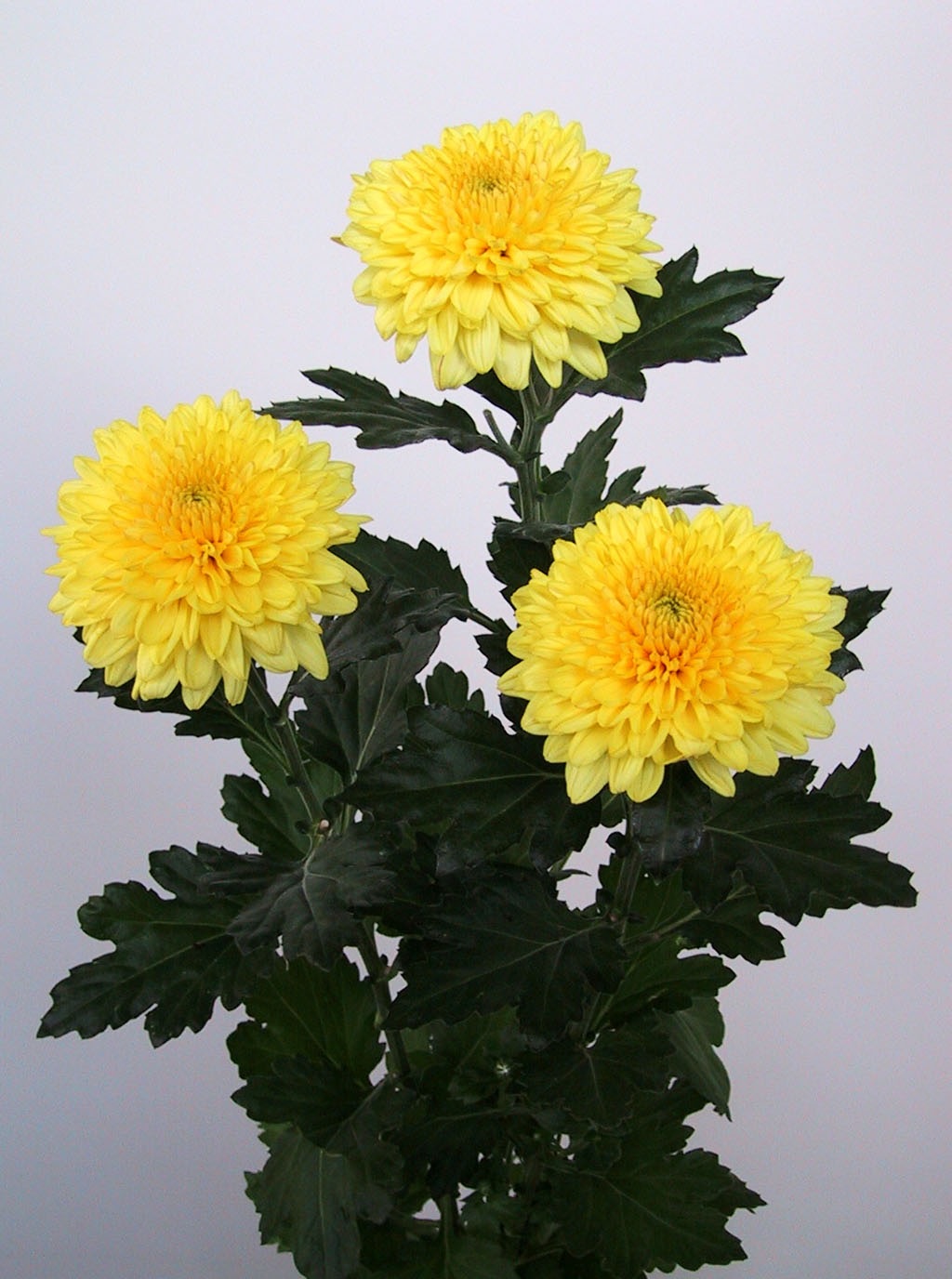
Another assumption is that the ancestors of garden chrysanthemum were Indian small-flowered varieties and Chinese chrysanthemum. Moreover, the development of new varieties of this amazing flower continues to this day.
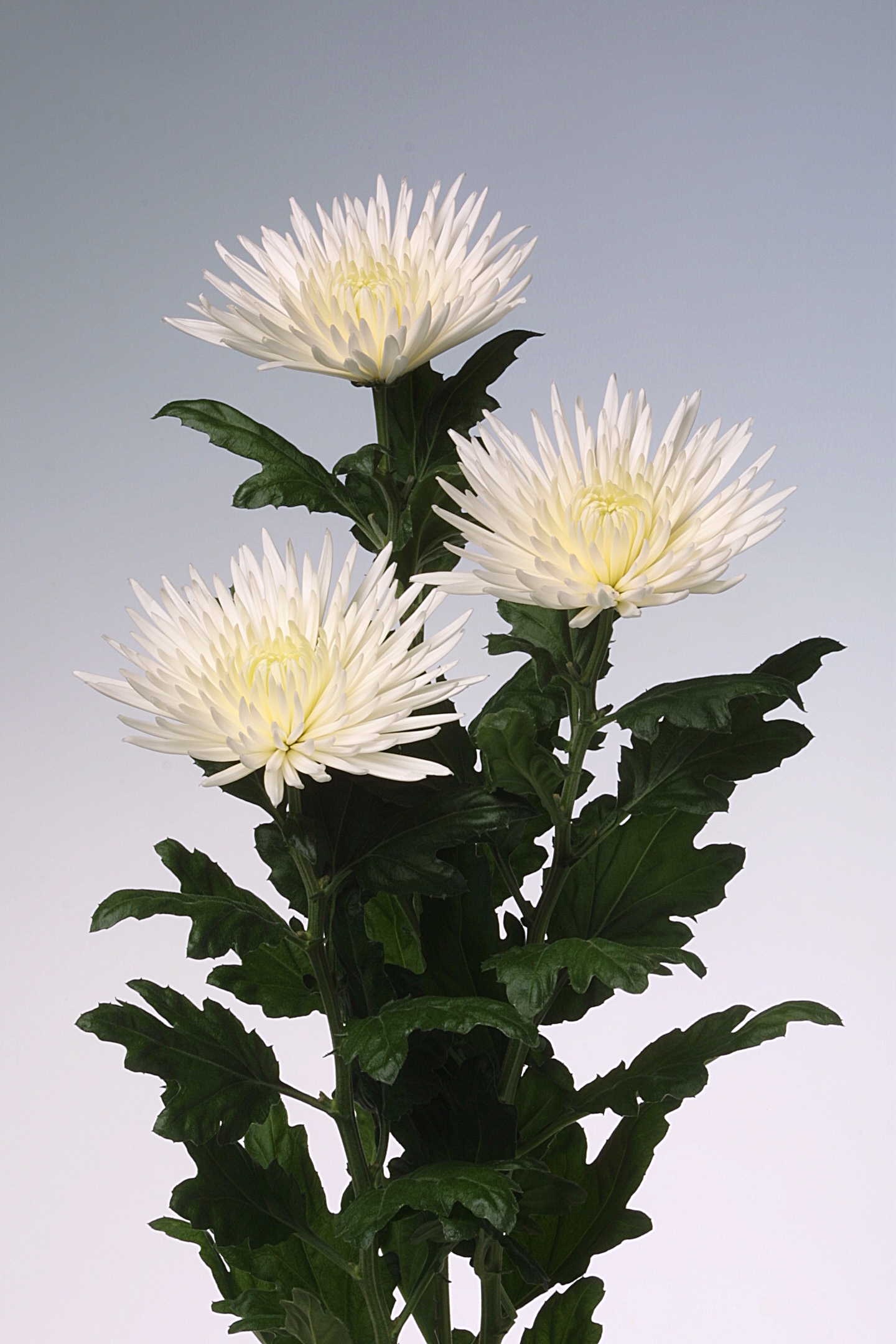
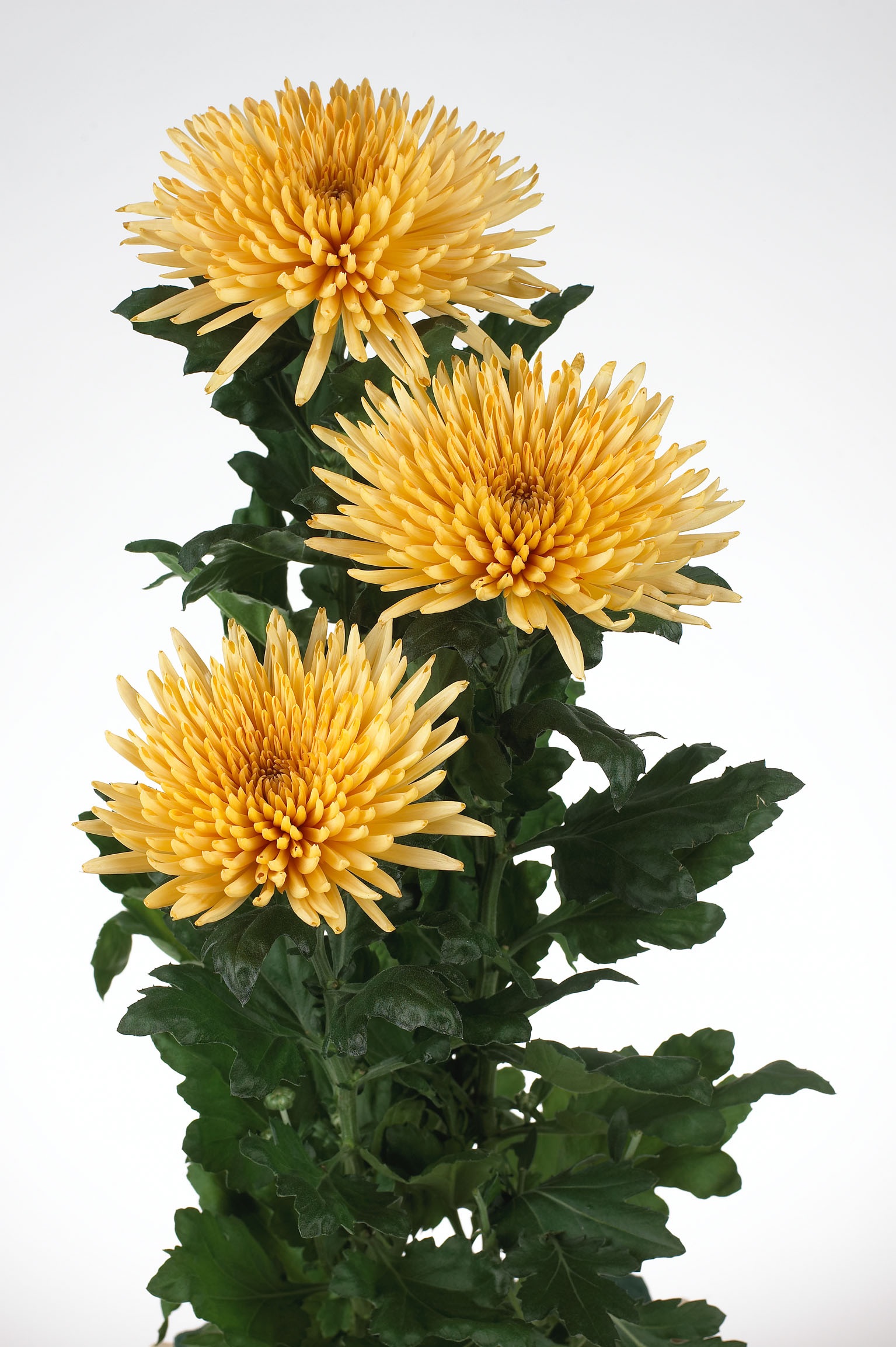
One of the classifications of this type of plant is its division into perennial and annual. You can also note herbaceous varieties and subshrubs.
![]()
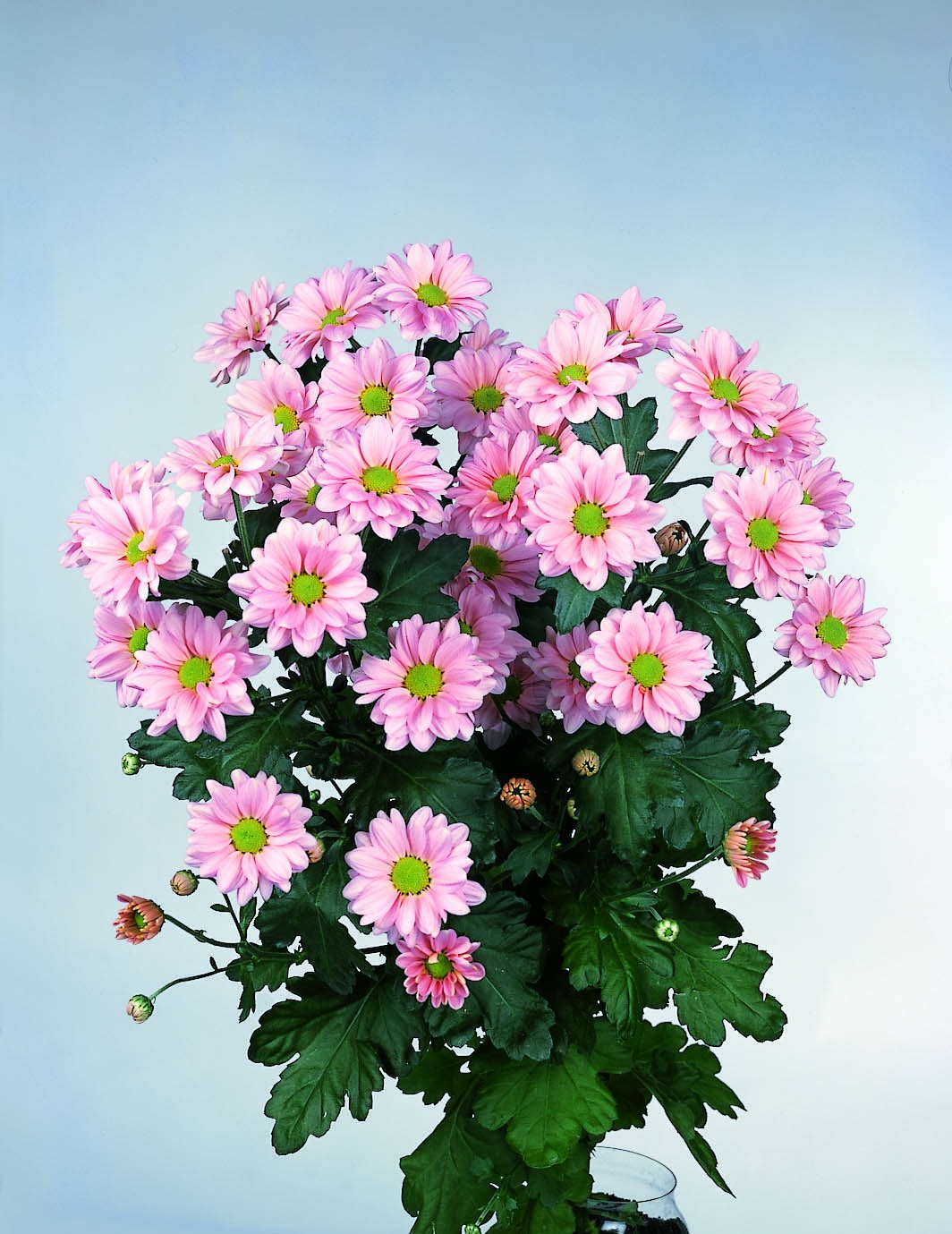
The roots of such plants have a branched structure and usually spread parallel to the surface of the earth. On the shoots of some varieties you can notice pubescence. All others have bare cuttings.
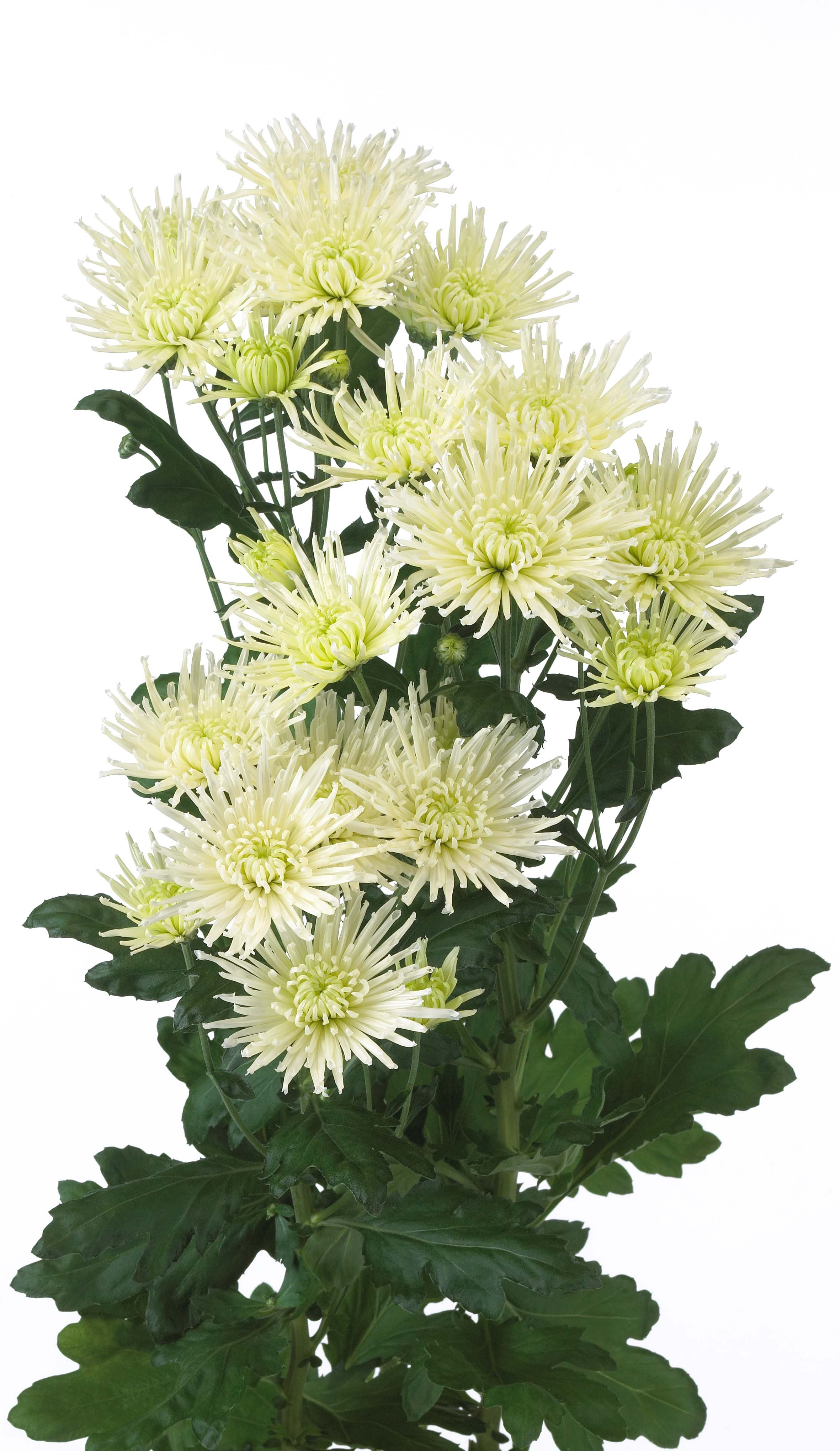
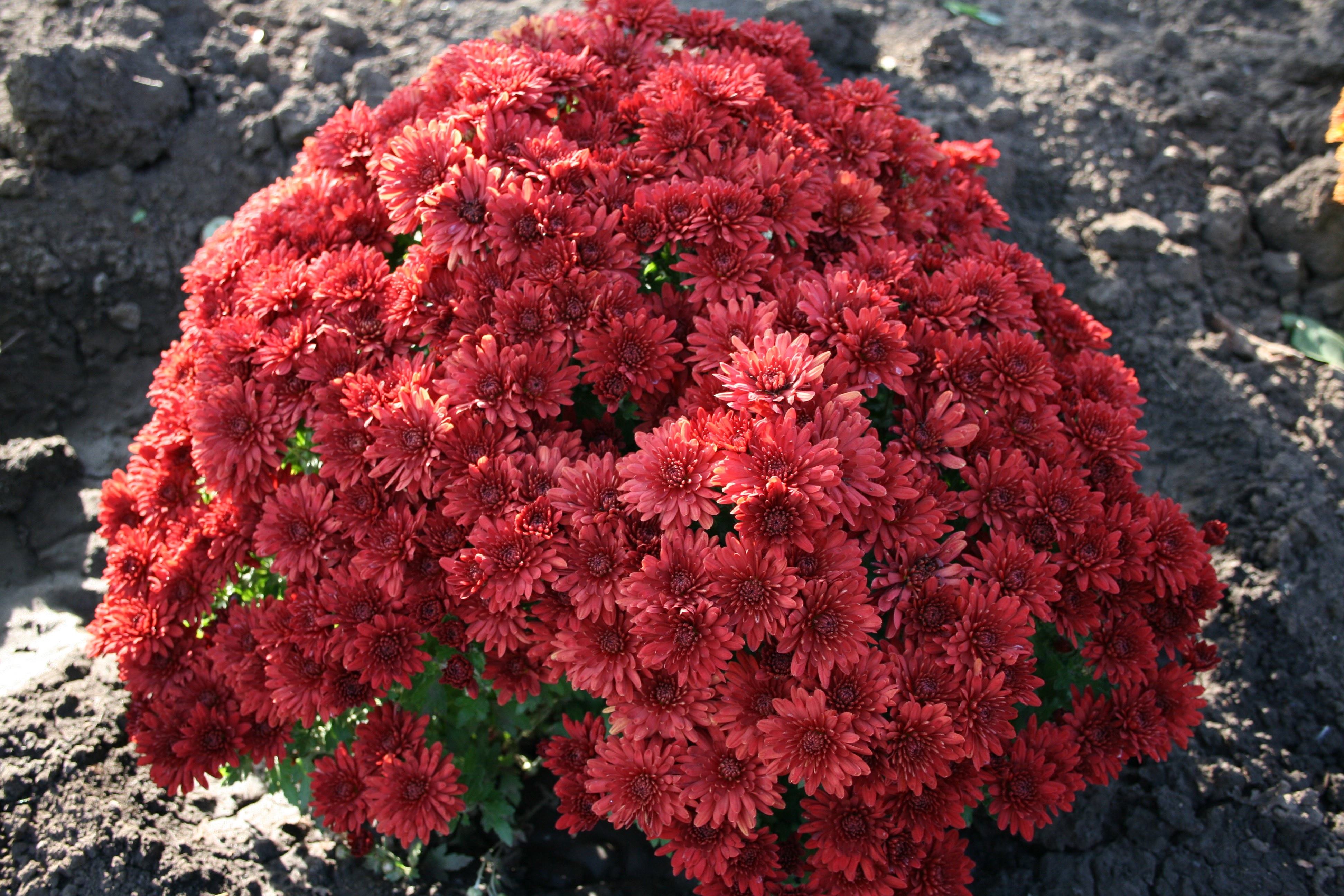
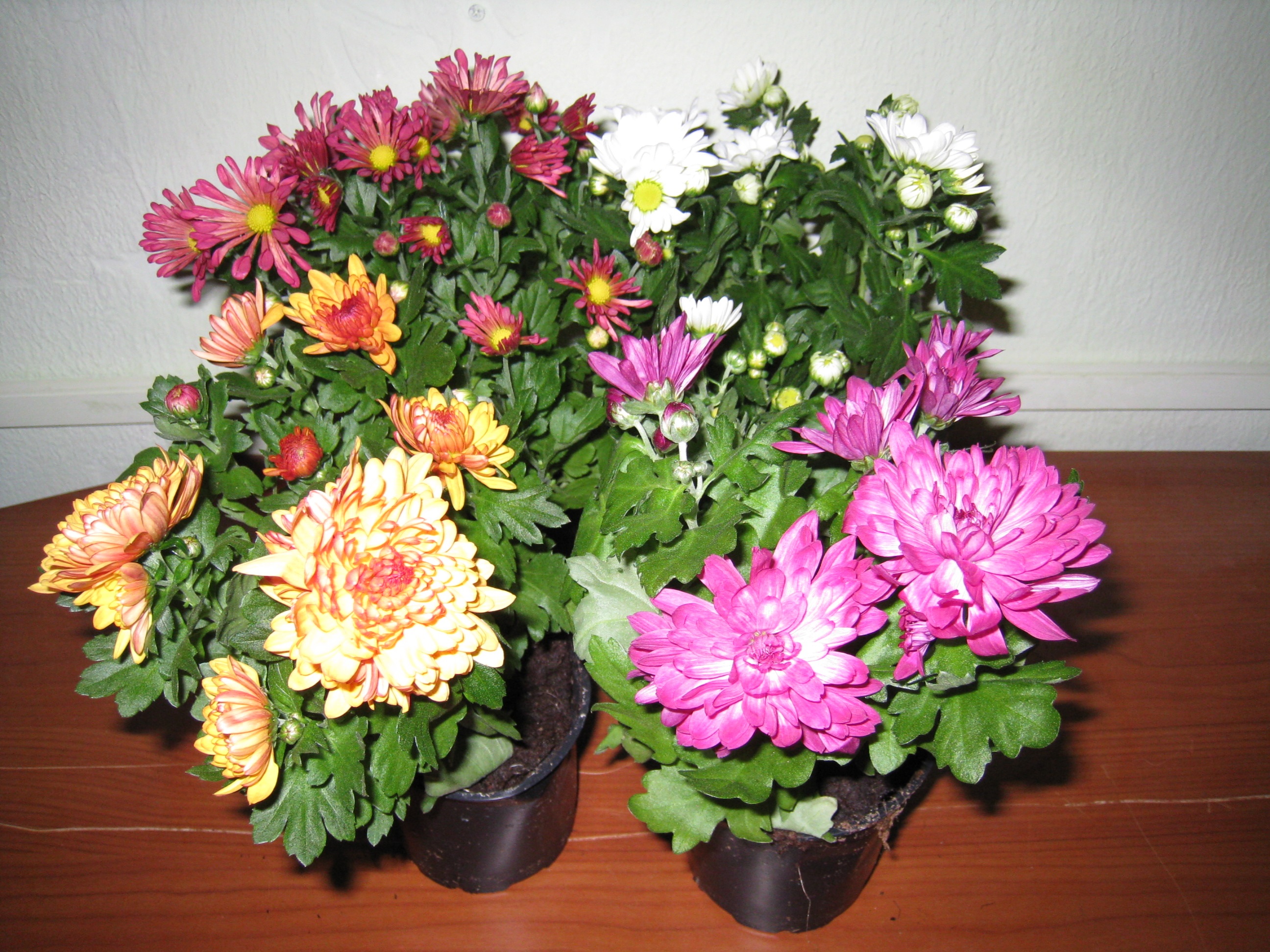
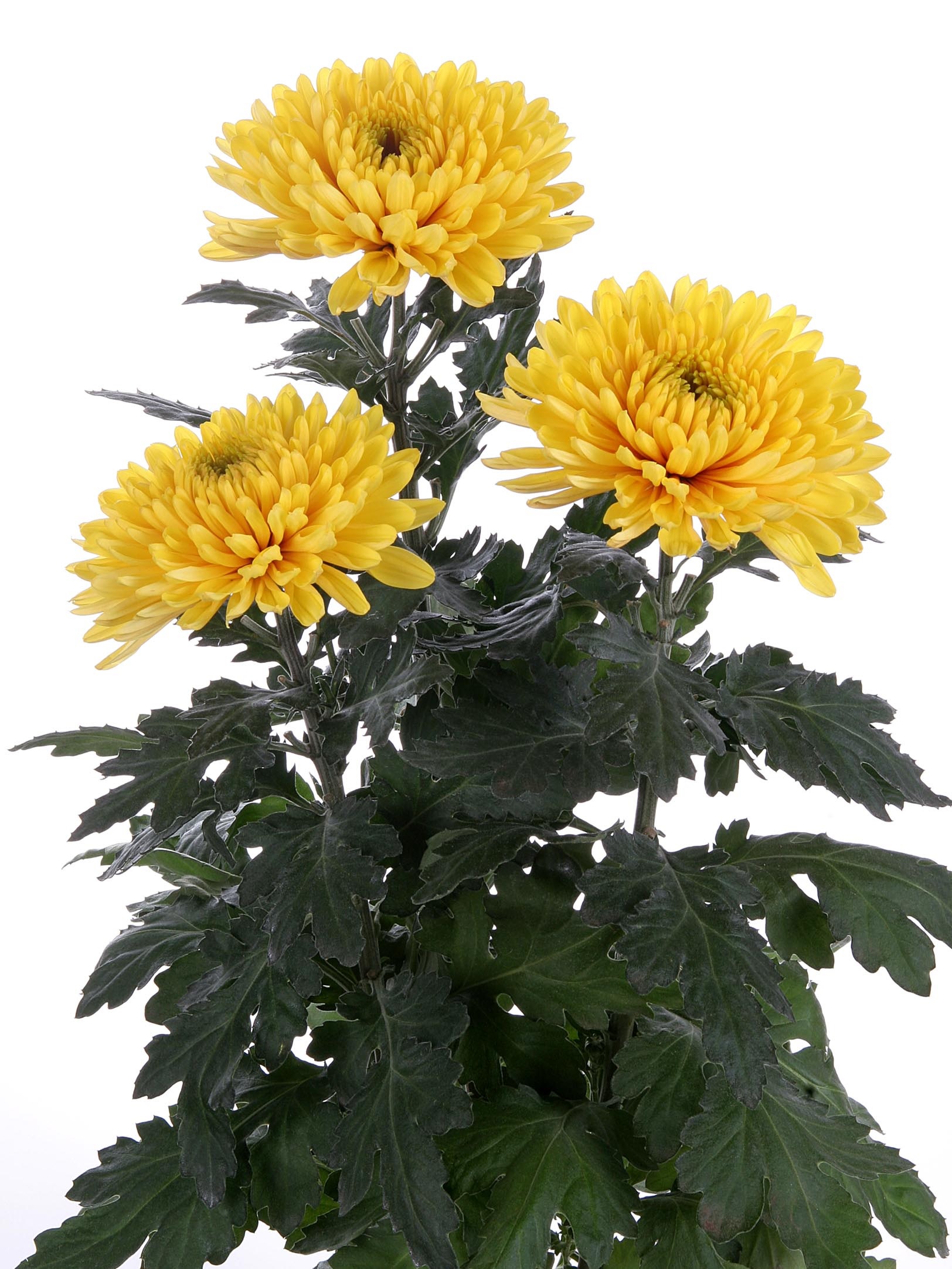
Variety of chrysanthemum varieties
IN different countries There are different classification systems for chrysanthemums. Some of them are common and worth familiarizing yourself with.
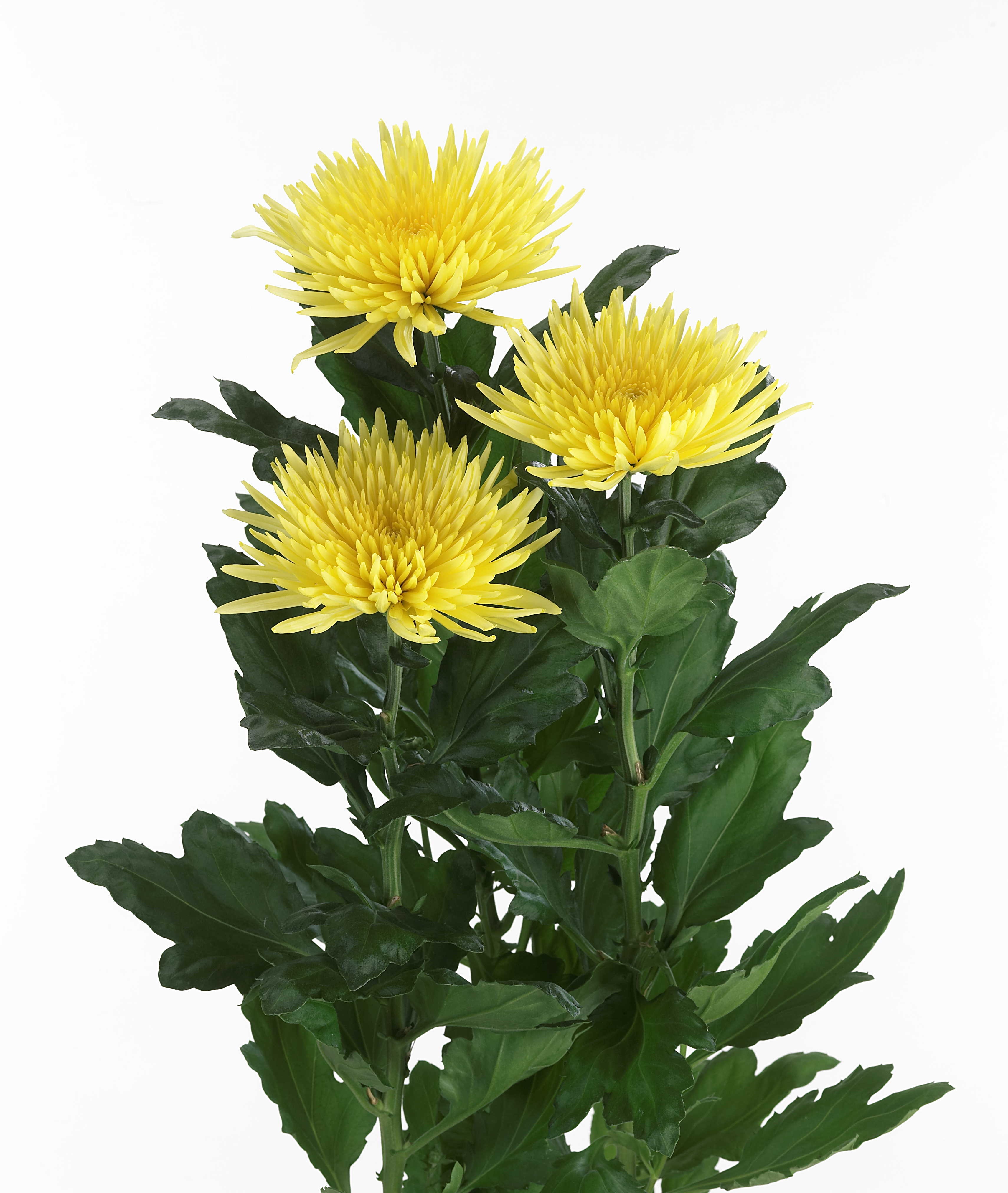
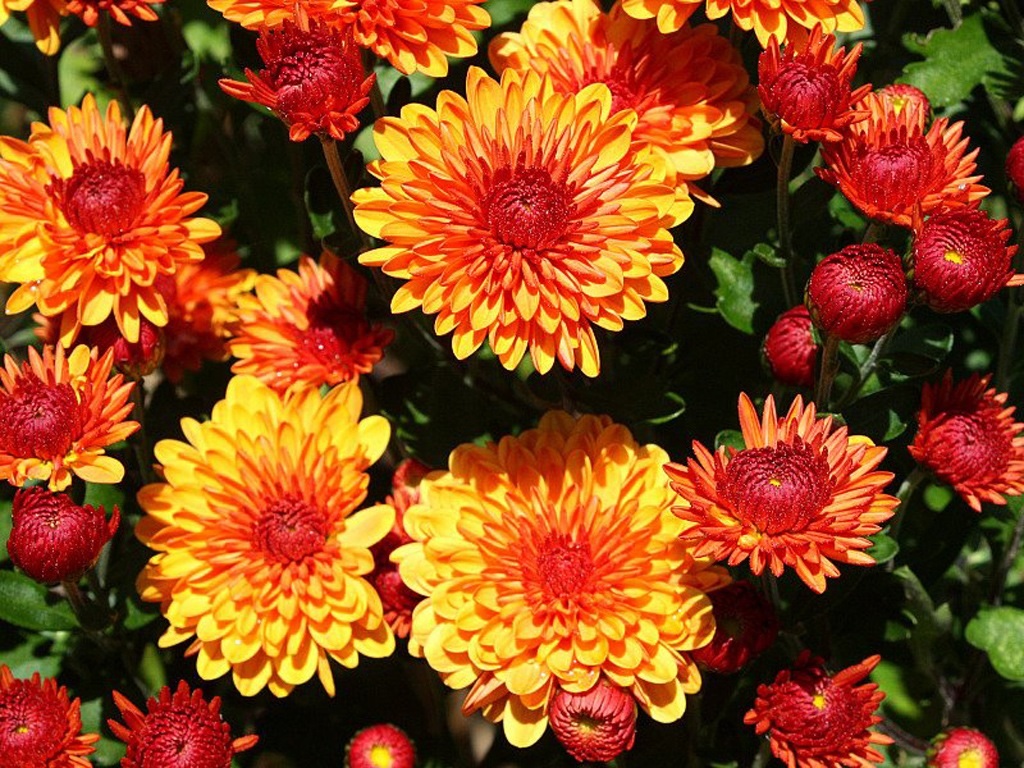
Size differentiation is presented in two categories:
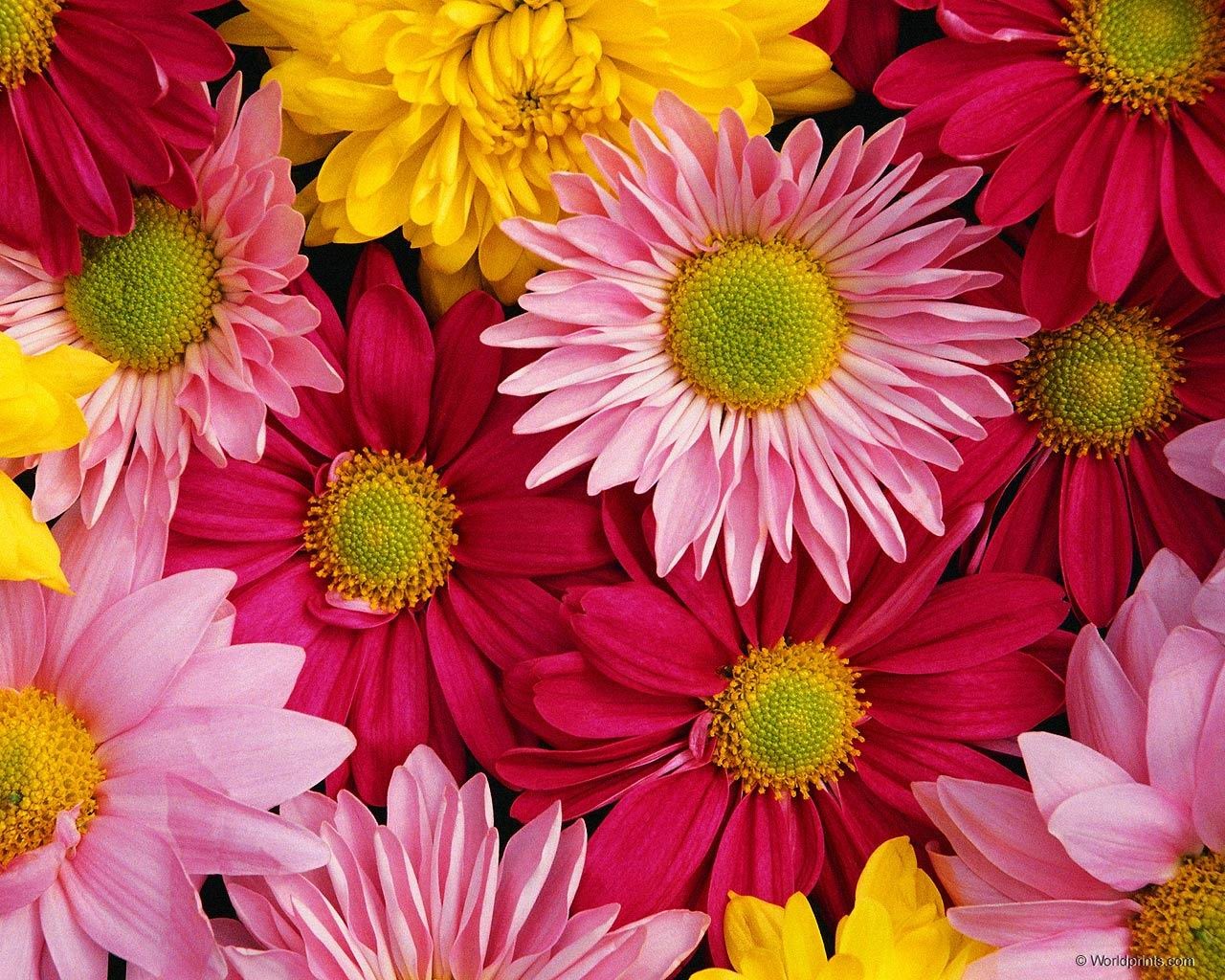
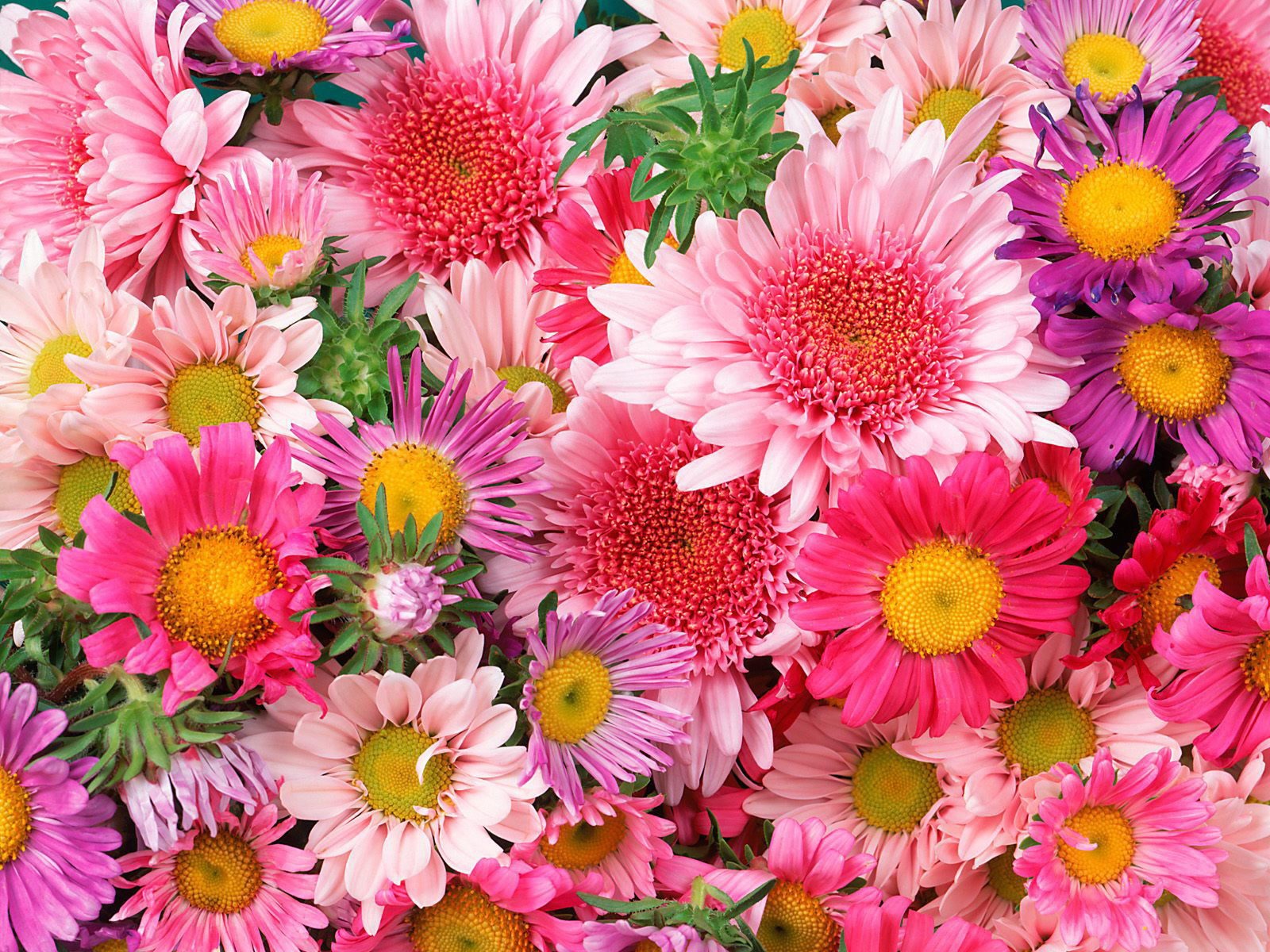
Large-flowered varieties have a flower diameter of up to 25 cm. Its height can reach 120 cm. Such species are characterized by various forms inflorescences. They are usually grown for cutting, since such a flower is not able to overwinter in the ground. But modern breeders have already presented several options that do not have this drawback.
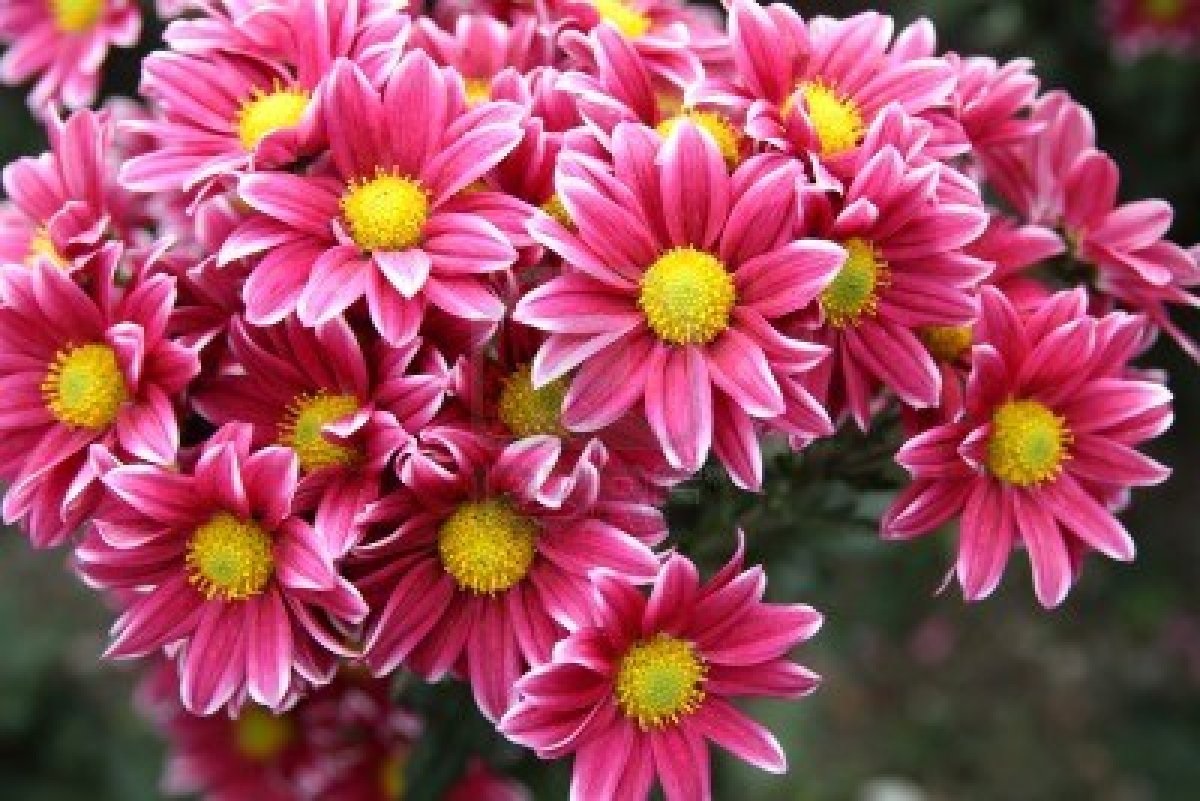
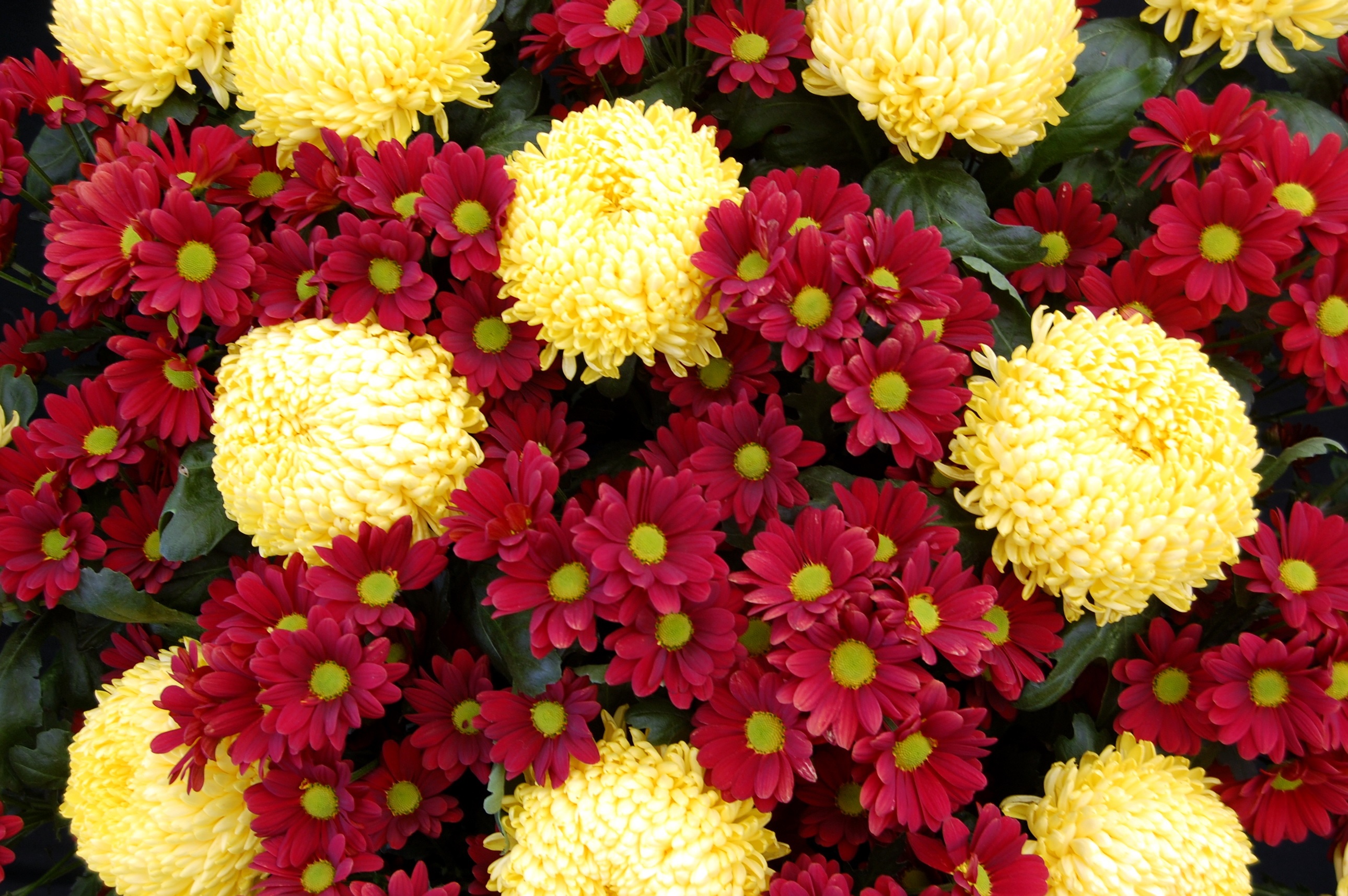
Among the most popular varieties:

The medium-flowering class includes decorative varieties. The maximum possible diameter of such a flower reaches 18 cm with a bush height of 70 cm. The use of such varieties is most varied: they can be cut or grown in pots and flower beds.

This variety includes:
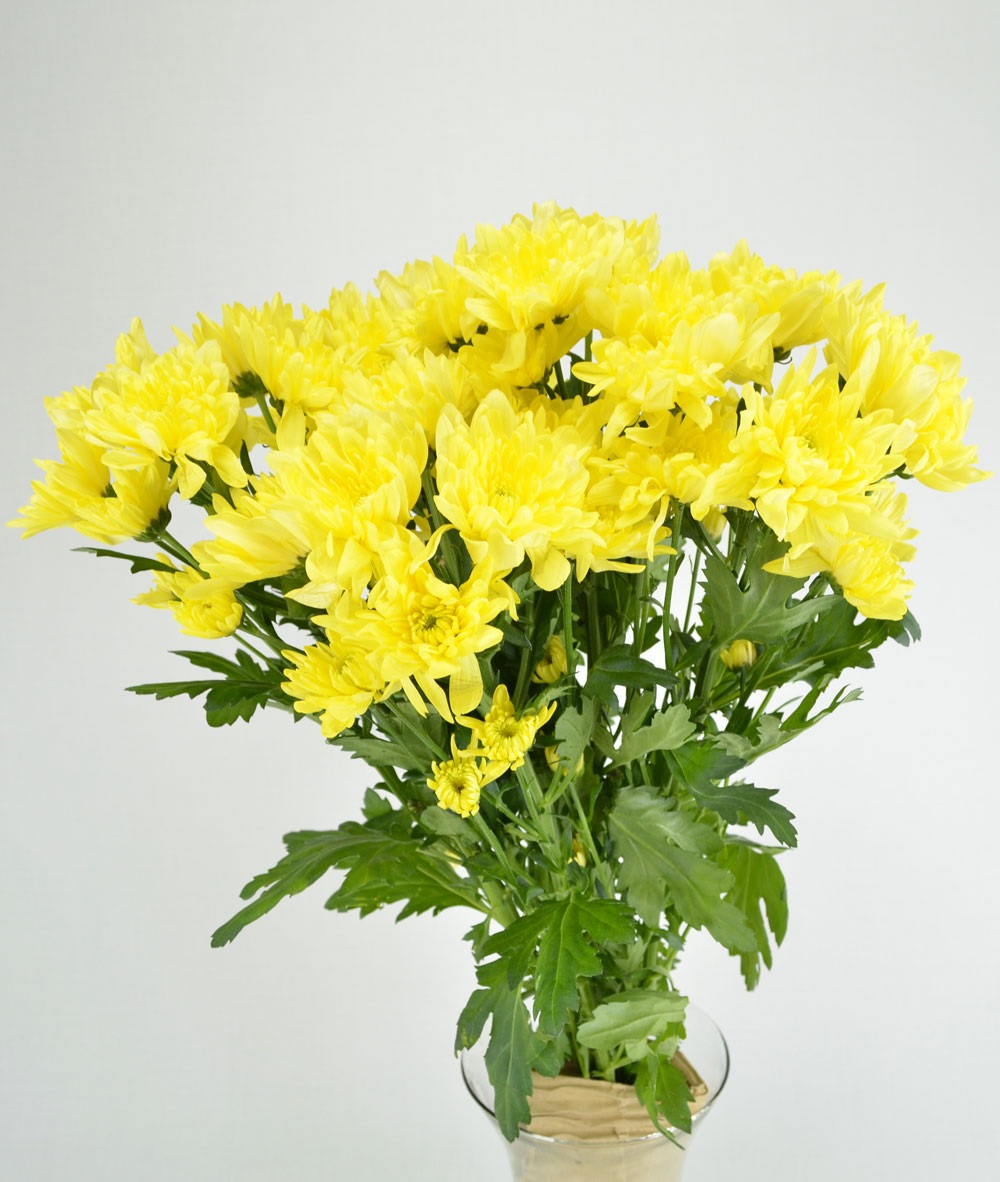
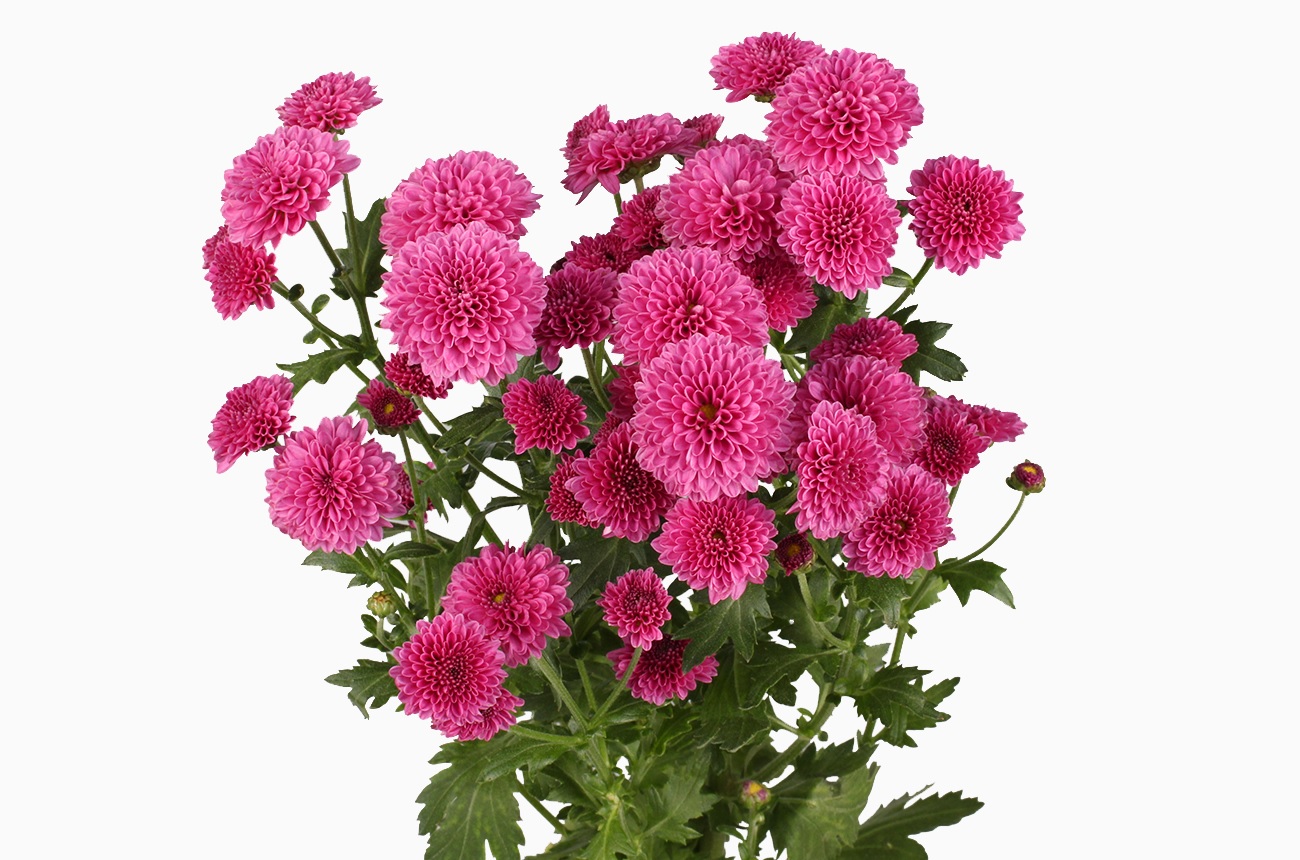
Korean small-flowered chrysanthemum is unpretentious and frost-resistant. In common parlance, such varieties are called “oaks”. The bush of the plant can reach up to 120 cm in height. In this case, the inflorescences grow only up to 10 cm in diameter. These varieties are perennial and can live in any soil for up to 4 years.
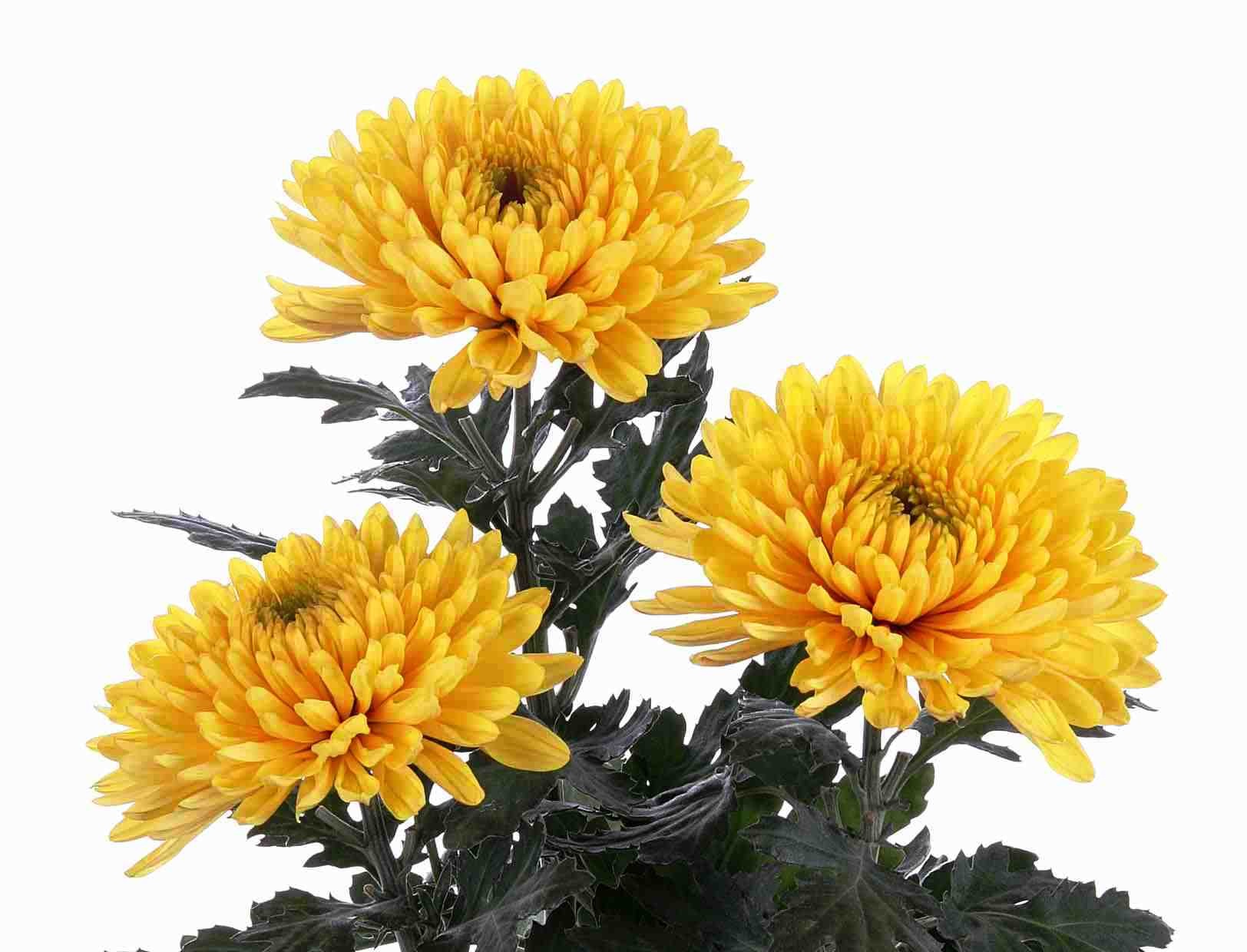
The most famous varieties in this classification chrysanthemums can be considered:

According to the timing of flowering, chrysanthemums are divided into early, mid-blooming and late varieties. There are a number of classifications, thanks to which a gardener or landscape designer will be able to choose the most suitable variety for a given type of cultivation.
The most effective care for chrysanthemums
The unpretentious chrysanthemum easily tolerates most varieties of soil composition. A more important question will be the location of the flower pot or flower bed. Good sunlight and well-drained soil are of paramount importance in growing this flower.
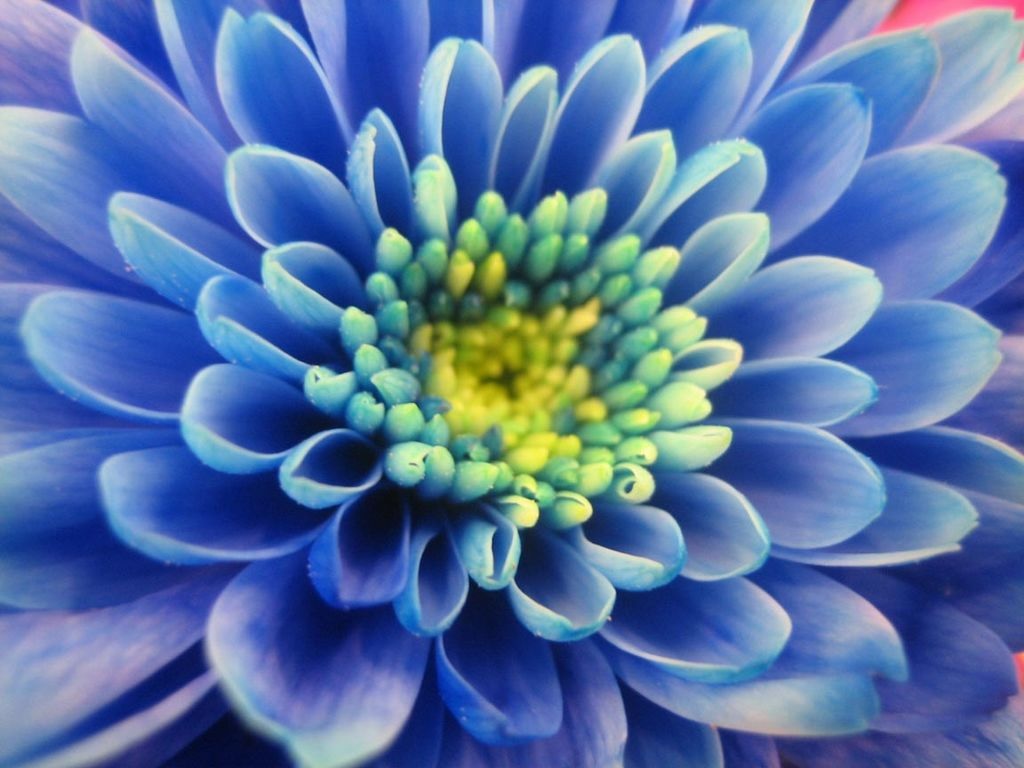
Regular feeding has a good effect on the appearance of the plant. The optimal regime would be when one general feeding occurs at the beginning of the season. After this, you can carry out a few more feedings with high content potassium during the period of bud setting. You should not be overzealous with fertilizers, because instead of bright colors you can get long and weak greens.
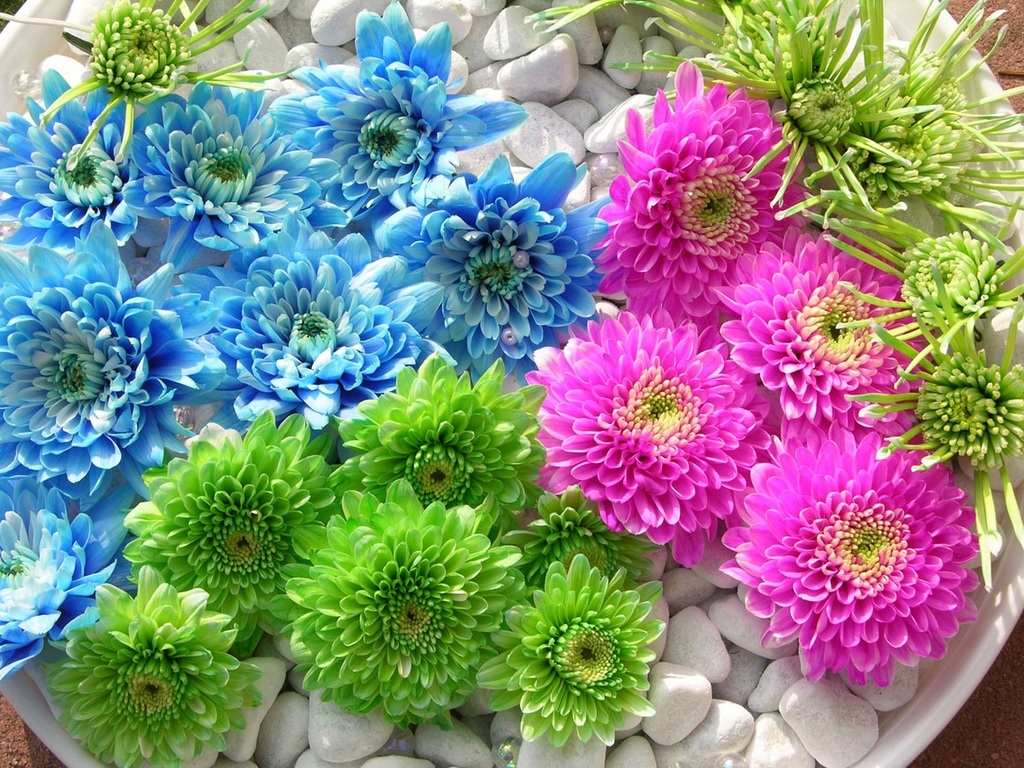
Tall varieties of chrysanthemums may need a garter. Metal rods or wire structures are suitable for this.
Chrysanthemums need to be watered abundantly, as lack of moisture affects appearance flowering plant. The best option there will be rain or settled water, to which a few drops of ammonia are added. The leaves should be protected from water; everything should be poured directly under the root.
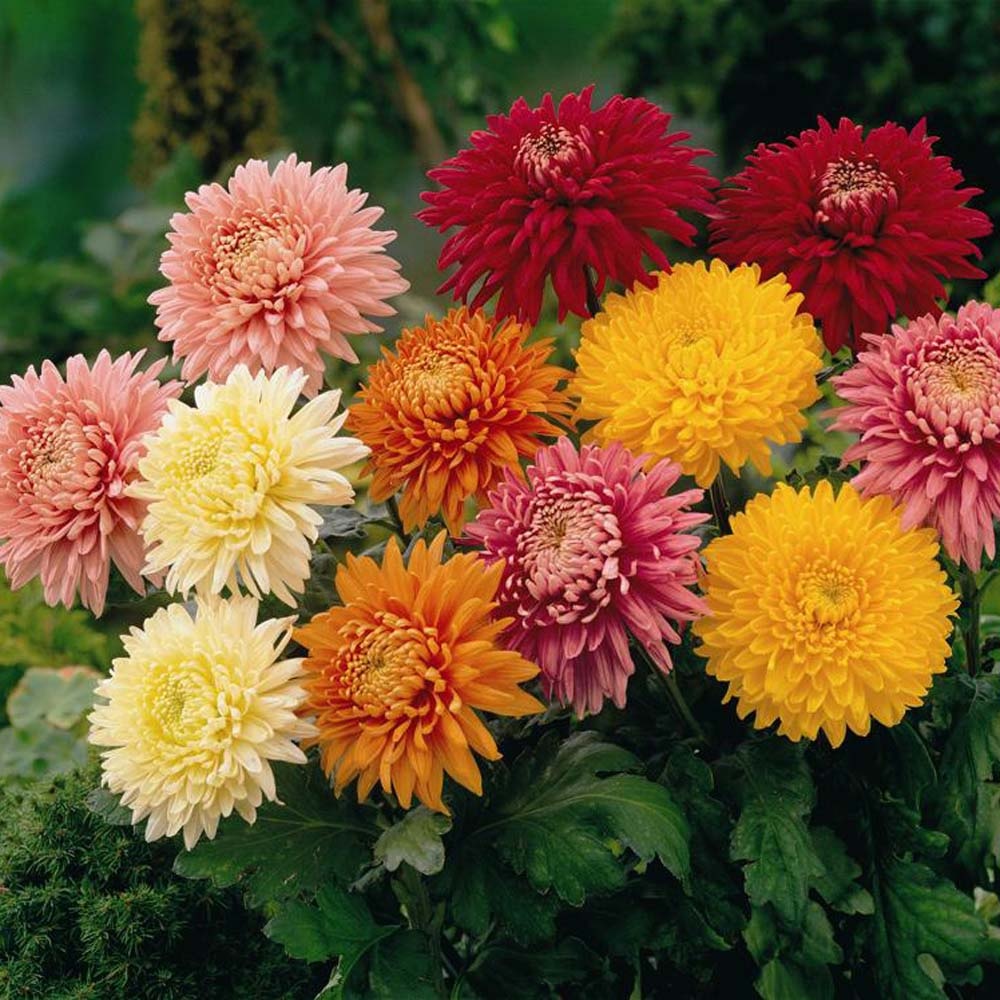
After watering, the soil should be loosened and weeds removed. Useful procedure the soil around the bush will be mulched.
Large-flowered varieties of chrysanthemums are characterized by the following types of inflorescences:
Early varieties of chrysanthemums (August - September):
Zlata Prague - golden-red with a golden reverse;
Evelyn Bush - white, hemispherical;
Excel - white, pink, spherical.
Medium chrysanthemum varieties (September - November):
Diplomat - bronze-red, hemispherical;
Indiana Policy - white, yellow, red, spherical;
William Turner - white, yellow, lilac, curly.
Late varieties of chrysanthemums (November - January):
Luyona - yellow, ray-shaped; Victory - white, spherical; Fred Shawsmith - white, yellow, hemispherical.
Small-flowered chrysanthemum varieties:
Early varieties of chrysanthemum (August - October):
Cherry - dark cherry, simple; Pearl - white, hemispherical.
Medium varieties of chrysanthemums (September - October):
Gagarin's memory - dark red, flat; Snow globe- white, pompom-shaped.
Late varieties of chrysanthemums (October - November):
Medallion - red-purple, yellow, spherical; Snow Elf - snow-white, terry.
Chrysanthemum (golden flower). Herbaceous wintering and greenhouse plant, height - from 25 to 120 cm. Its flowers are collected in inflorescences, simple, double, snow-white, lilac, dark purple, golden and other colors. Flowers have a subtle, well-remembered, pleasant aroma. The bright flowering period of chrysanthemums is August - January. Large-flowered (diameter of inflorescences over 15 cm) and small-flowered (diameter up to 9 cm) groups of plants are widespread. According to the timing of flowering, chrysanthemum flowers are divided into early, middle and late types.
Growing large-flowered varieties of chrysanthemums.
The plants are cold-resistant, but the buds die at a temperature of 0°C. They are photophilous and moisture-loving, grow well on fertile sandy loam soils fertilized with humus. They are propagated by cuttings and dividing the bush. Store bushes in dry, well-ventilated and ventilated basements or in grooves 40-50 cm deep.
In the spring they are planted in boxes at a distance of 15 cm from each other, they try to water them abundantly warm water and placed in bright rooms, verandas. In May, the bushes are divided and large-flowered chrysanthemums are planted in a permanent stationary place of growth at a distance of 40 cm from each other. Planting is done in the evening. After planting, supports are installed and the plants are tied up as necessary.
Forming a bush is the most important technique, which consists of pinching the tops of shoots and pinching. To obtain large inflorescences, one stem is left on the bush, the rest are removed. When the plants reach 15 cm, do the first pinching of the tops of the shoots, and in the nursery - the second; in July - the third.
The planting of large-flowered chrysanthemums is carried out as axillary shoots appear (6-10 times). In August - September, the upper axillary single flower buds are left for the planned production of inflorescences, then all axillary ones are removed. During the summer, plants feed the flowers 3-4 times, water them abundantly and keep the soil loose.
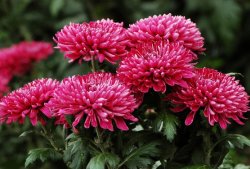
Mulch with sawdust, humus and sand. At the beginning of October, the bushes are dug up and planted in boxes. They are brought indoors to protect the buds from low temperatures. From July until the end of the growing season, plants are watered in the morning under the roots so as not to soak the leaves and buds.
To select the best clones of large-flowered chrysanthemums during the flowering period, plants typical for the variety are marked with labels. After removing all the inflorescences, the stems are cut 3-4 cm from the soil horizon, carefully dug up, placed in boxes and stored in dry basements or in pre-prepared grooves 50 cm deep, which are covered with insulating materials when cold weather sets in.
Growing small-flowered varieties of chrysanthemums.
Frost-resistant, unpretentious plant open ground. It is advisable to grow in one place for 3-4 years. Flowering period in open ground- from August to frost. It is propagated by dividing the bushes, which is done in the spring when the first shoots appear. The bushes are immediately planted in a permanent place, the distance between plants is 30-40 cm. Chrysanthemums are pinched once above the fifth leaf, the shoots are not pinched. Care is the same as for large-flowered plants. As the inflorescences fully bloom, they are cut off, which allows the remaining buds to develop luxuriantly.
Chrysanthemums came to us from China, Korea and Far East. It was there that they first began to grow this autumn flower. A lot has changed since then. Many were bred in greenhouses different varieties chrysanthemums It is worth noting that their buds come in a wide variety of colors with absolutely no restrictions. This makes the chrysanthemum a desirable flower in autumn garden or on the windowsill. In this article we will write about the varieties of chrysanthemums, as well as the features of caring for them. We will accompany all types of chrysanthemums with photos and names.
Terry chrysanthemum, medium-sized. Photo from the site: www.senpolia.ru
Chrysanthemums: varieties with photos and names
Types of chrysanthemums, photos with names will be useful to you when growing these flowers. Despite the fact that the conditions of their detention are almost the same, there are still some nuances. Certain varieties of chrysanthemums are designed to be grown outdoors. These are garden chrysanthemums, photo of the variety.
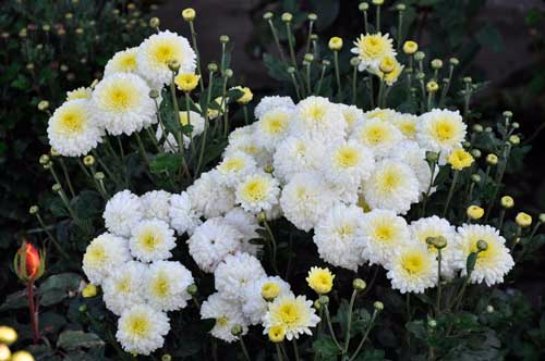
Terry chrysanthemum, low growing. Photo from the site: flo.discus-club.ru
There are also indoor chrysanthemums. It is clear that caring for them will be somewhat different.
In addition, knowledge of chrysanthemum varieties will broaden your horizons. You will learn about how diverse these flowers are, which will help you decide on the type that you will grow personally.
Korean chrysanthemums, varieties and their descriptions
The most popular are Korean varieties of chrysanthemums. They are unpretentious and very diverse in their shape and color. It is worth noting that these varieties are bred artificially. They were instilled with some characteristics that adapt the plants to apartment conditions. In other words, Korean chrysanthemum varieties are beautiful indoor flowers. True, you can plant them in the garden. But, unfortunately, Korean chrysanthemums will not be able to survive the cold winter there. Korean types of chrysanthemums, photo:
- large-flowered;
- small-flowered.
If chrysanthemum inflorescences are more than 10 centimeters in diameter, they are considered large-flowered. If less - small-flowered. The first ones are used to create bouquets and compositions. The latter decorate flower beds and front gardens.
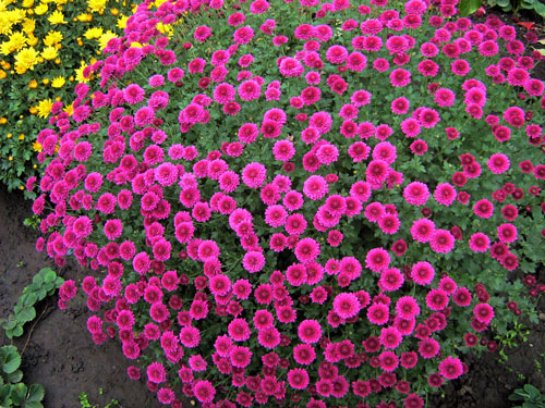
Globular small-flowered double chrysanthemum. Photo from the site: OgorodSadovod.com
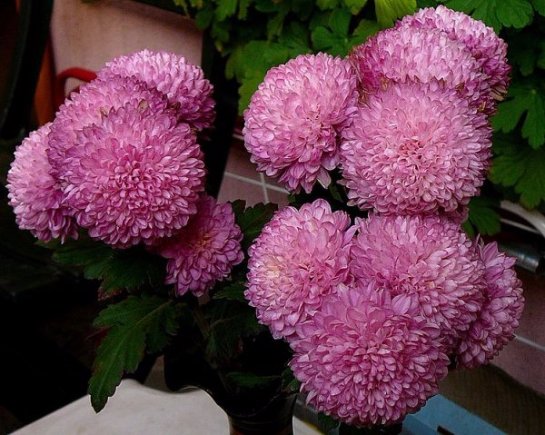
Large-flowered fly chrysanthemum. Photo from the site: ogorodsadovod.com
Each of these species is in turn divided into separate subspecies and varieties of chrysanthemums. So, we classify the following varieties as small-flowered Korean chrysanthemums:
- single row (similar to daisies);
- double row;
- semi-double;
- terry;
- anemone-shaped;
- pompoms.
The single-headed chrysanthemum stands out especially. The varieties of this series are characterized by large double flowers, which are located separately on the bush. See photos of types and varieties of chrysanthemums. The variety “Gazelle” belongs to semi-double chrysanthemums. Among the terry varieties, it is worth highlighting the varieties “Valentina Tereshkova”, “Alek Bedser”, “Dune”.
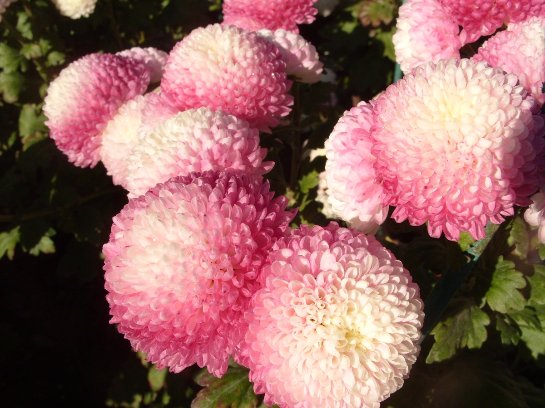
Chrysanthemum pompom, tall. Photo from the site: www.7dach.ru
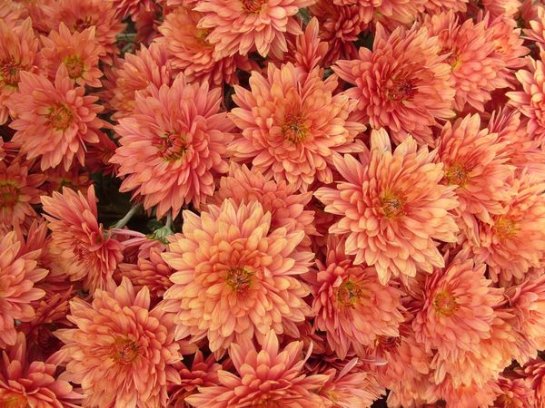
Semi-double tall chrysanthemum. Photo from the site: gorodisad.ru
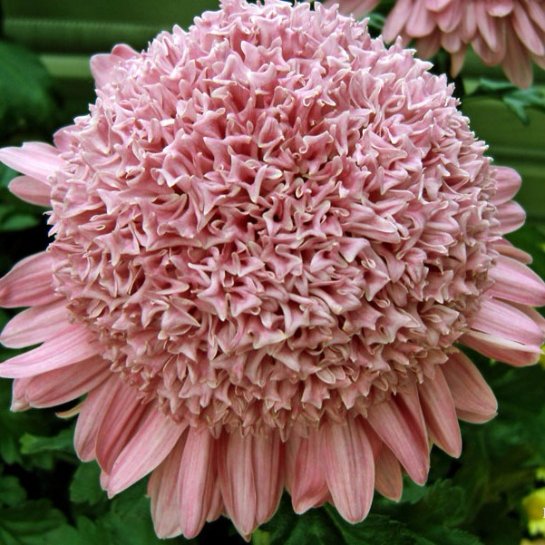
Pompom large-flowered chrysanthemum. Photo from the site: LovGarden.ru
It is worth noting that the Korean bush chrysanthemum is divided into three varieties depending on its growth:
- short;
- medium height;
- tall.
Low-growing ones usually have a spherical shape and do not require special care. Medium and tall people require regular pruning. With its help they form a beautiful bush. If tall bush chrysanthemum varieties are not pruned, they may grow in length rather than width. As a result, the plant will not have a beautiful shape; it will be long and thin.
Tall chrysanthemums sometimes need to be tied up. This makes them more stable and protects them from strong wind which happens in the fall.
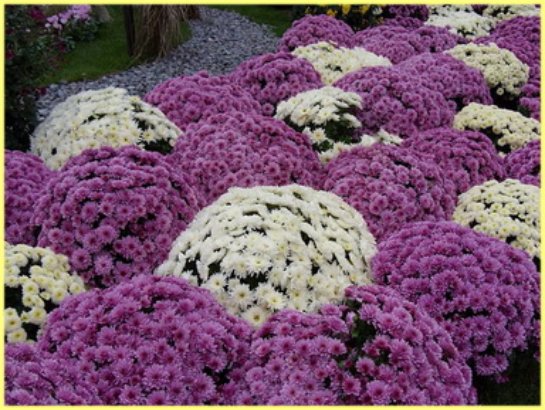
Balloons small-flowered chrysanthemums. Photo from the site: sadsamslabo.ru
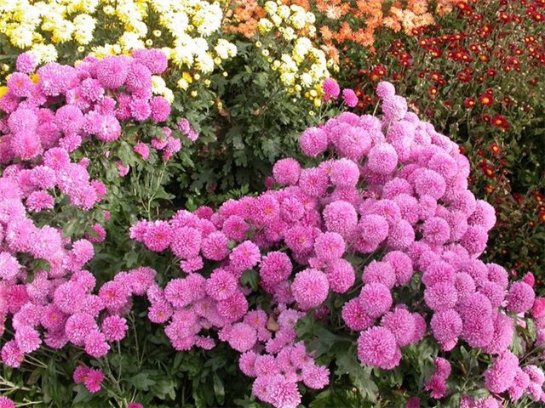
Terry tall chrysanthemums. Photo from the site: Moicveti.ru
Particularly worth highlighting are the border varieties of Korean chrysanthemums. The name itself suggests that the flowers are low-growing; they decorate low fences, borders and small flower beds. Border chrysanthemums grow no higher than 30 centimeters. Moreover, they can be up to 60 centimeters wide. These include varieties “Ida” and “Multiflora”.
Globular chrysanthemums do not require any special measures to form a bush. Their varietal characteristics include the sphericity of the bush and inflorescences. This is achieved using special drugs, which inhibit the growth of shoots. Plants are sprayed with them in greenhouses. Having bought a spherical chrysanthemum, you can not only admire it, but also propagate it. When cutting varietal characteristics will remain, but when propagated by seeds - not. From the seeds you will grow an ordinary bush chrysanthemum without a hint of a spherical shape.
Border Korean chrysanthemums have small inflorescences. Their diameter is no more than 7 centimeters. Another peculiarity of this variety is that it has a weakly expressed root shoots. Usually all big bush rests on one stem. This makes the chrysanthemum unstable. But since she is short, it is not very noticeable.
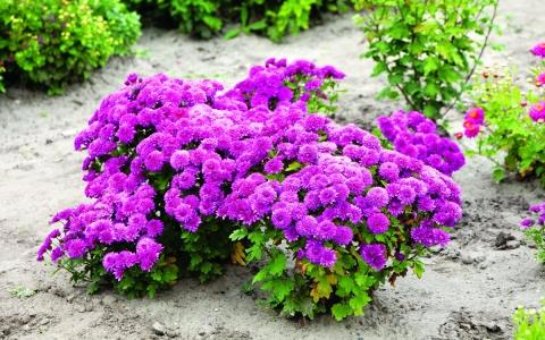
short double chrysanthemums. Photo from the site: OgorodSadovod.com
Medium-sized Korean chrysanthemums come in a wide variety of varieties: double, semi-double, single-row. They are tall enough to be used as cut flowers for bouquets. Typically, these plant varieties are grown in flower beds and group plantings.
Tall Korean chrysanthemums can reach 1 meter in height. They come in all types and colors. A well-developed bush can be covered with flowers.
Interestingly, tall chrysanthemums can be made to bloom longer. To do this, you need to cut off the buds that have already bloomed. The plant will respond to this by growing new flowers.
Korean chrysanthemum varieties are not winter-hardy. In order for them to survive the cold, they need to either be covered or taken to the cellar or pantry.
These flowers also do not like autumn transplant. Often it leads to the death of the plant, which simply does not have time to take root before the onset of the first severe frost. That is why care for chrysanthemums in the following order:
- Spring transplantation or planting (horses April-May).
- Application of nitrogen fertilizer.
- Pinching (trimming).
- Application of potassium-phosphorus fertilizers (horses August-September).
- Preparing for winter (horses October-early November).
If you care for the plant in this order, it will develop well and bloom on time.
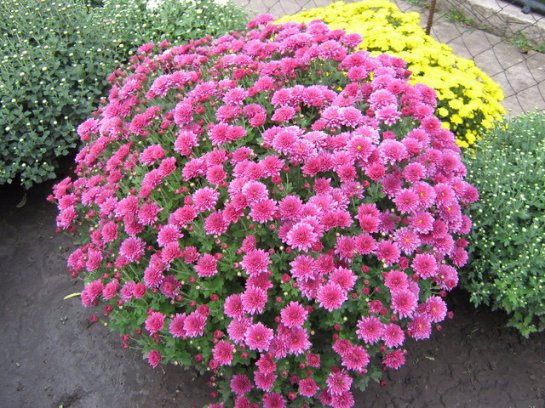
Globular semi-double chrysanthemum. Photo from the site: www.ekomissionka.dp.ua
Early varieties of chrysanthemums
Bush chrysanthemum is also divided into early and late types. Typically, chrysanthemums bloom when daylight hours are shortened to 8 hours and the air temperature is set at 15-18 degrees Celsius. Such conditions are created in October-November. Of course, flower growers would like to see the buds earlier. For this purpose they were bred early varieties chrysanthemums These flowers can bloom as early as the end of August. This occurs due to decreased sensitivity to light and temperature. These varieties include, in particular, “Valentina Tereshkova”. These flowers were bred in Crimea. They bloom already in early September. The Alec Bedser variety also has similar flowering periods.
You can arrange in your garden different types chrysanthemums Some will bloom earlier, others later. As a result, you will receive constantly blooming garden. Diversity color range chrysanthemums will make it a real paradise. Chrysanthemums: varieties with photos.

Tall and short semi-double chrysanthemums. Photo from website: LiveInternet
Chrysanthemums. Winter-hardy varieties
Winter-hardy chrysanthemum varieties withstand high frosts. Of course, they are still prepared for wintering and insulated, but they are not dug up and placed in the cellar, like, for example, spherical chrysanthemums. Winter-hardy varieties include Korean “Oaks”. These are chrysanthemums that bloom until late autumn. They can easily tolerate frosts. Even at -5 oak trees continue to bloom as if nothing had happened.
Such chrysanthemums do not need to be dug up for the winter. It will harm them rather than benefit them. It is better to prepare them for wintering outside. To do this, do the following:
- At the beginning of autumn, fertilize the soil near the chrysanthemum with potassium-phosphorus mineral supplements. They will give the flower additional strength for flowering, and then for wintering.
- At the end of October, do sanitary pruning chrysanthemums Remove all dried and rotten stems. This is done so that in the thick of the bush winter time there are no fungi, mites, thrips or other pests. By removing all non-viable parts of the flower, you pre-destroy the breeding ground for microorganisms that harm the chrysanthemum.
- Make sure that the soil around the chrysanthemum does not have any depressions or holes. Water can accumulate in them, which will increase soil moisture. This is not good. Even winter-hardy varieties Chrysanthemums do not like excessive moisture. Therefore, if there are holes, you need to fill them up.
- Next comes the insulation stage. Winter-hardy chrysanthemums do not need to be covered with polyethylene. It is enough to fill the root space with branches, dry leaves or sawdust. But if you are worried about the flowers, you can cover them. Just don’t neglect the construction of the frame. It is important to ensure that the chrysanthemum receives enough air. During the thaw, flowers covered with a frame with polyethylene will remain unharmed. Those that are simply covered with cellophane may dry out, because there will be no access to fresh air to them.
We hope you liked our article. Read other materials on our website, and also watch the video.
Chrysanthemums have always delighted flower growers around the world with their beautiful appearance. And they did this until the frosts. There are many types of a wide variety of shades and shapes. There is simply no specific distribution by species. In each country, flowers are classified differently, in a way that is more convenient for local residents. In some countries there may be 10 types of chrysanthemums, while in others there may be 15 or more.
Origin of the flower
Chrysanthemums have spread all over the world from the Far East and people have known about them since ancient times. Residents of China were the first to grow chrysanthemums and select them in pots. There is an opinion that the first domestic flowers of this species were spider chrysanthemums, which were used in cooking and medicine, and later for landscaping. For the people of China, this flower still remains magical symbol, a good spice and a favorite houseplant.
Chrysanthemum varieties: photo
There are many sources of information where you can get acquainted in detail with a certain type of chrysanthemum, photos and opinions of flower growers. But there is several of their main types:

Perennials and annuals
Perennial chrysanthemums are distinguished by the fact that can bloom for more than three years without requiring much care or rejuvenation. Such varieties are usually planted in parks and recreation areas, and they are used to decorate adjacent areas. The photo shows yellow chrysanthemums that will decorate any garden or park area.
In landscape design, flower varieties are used, both annuals and perennials. It goes without saying that the latter are less of a hassle, but there are types of annual chrysanthemums that outshine similar perennial varieties in their beauty.
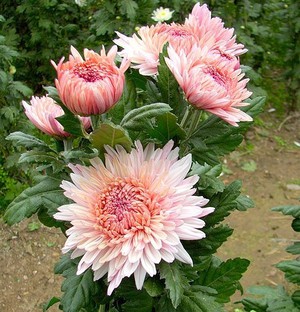
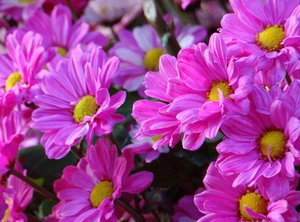 When caring for chrysanthemums, most of your attention should be directed to the process of bush formation. For this purpose, constantly trimmings are made and perform pinching. The first pinching is done when the main shoot grows to ten centimeters. The top of the shoot is removed. Next, you need to wait until the side shoots reach the same size and then pinch them off. After these procedures, the plant is not touched until flowering.
When caring for chrysanthemums, most of your attention should be directed to the process of bush formation. For this purpose, constantly trimmings are made and perform pinching. The first pinching is done when the main shoot grows to ten centimeters. The top of the shoot is removed. Next, you need to wait until the side shoots reach the same size and then pinch them off. After these procedures, the plant is not touched until flowering.
We must not forget about regular watering. The plant is very dependent on the amount of moisture in the soil. It does not tolerate drought well and there is a risk of dropping all the buds, even if the drought is short-lived.
It is very important to use fertilizers organic and mineral character. Substances containing potassium and magnesium are used for feeding, but during green growth, the plant requires more nitrogen-containing fertilizers. During digging, a lot of organic matter is introduced into the ground.
During chrysanthemum flowering, it is worth remembering that it is necessary to remove dried or old buds. This allows you to increase the flowering time to four weeks.
Chrysanthemum propagation
Chrysanthemums are propagated in several ways. The simplest and effective way- This bush division, since mature bushes need to be divided every two years. Another way is cuttings. It's not difficult either. They take root very easily and take root quickly. Well, the last way is seeds. The easiest way is to purchase them in a specialized store, where they will always tell a novice gardener how to plant them correctly.
Types and varieties of chrysanthemums
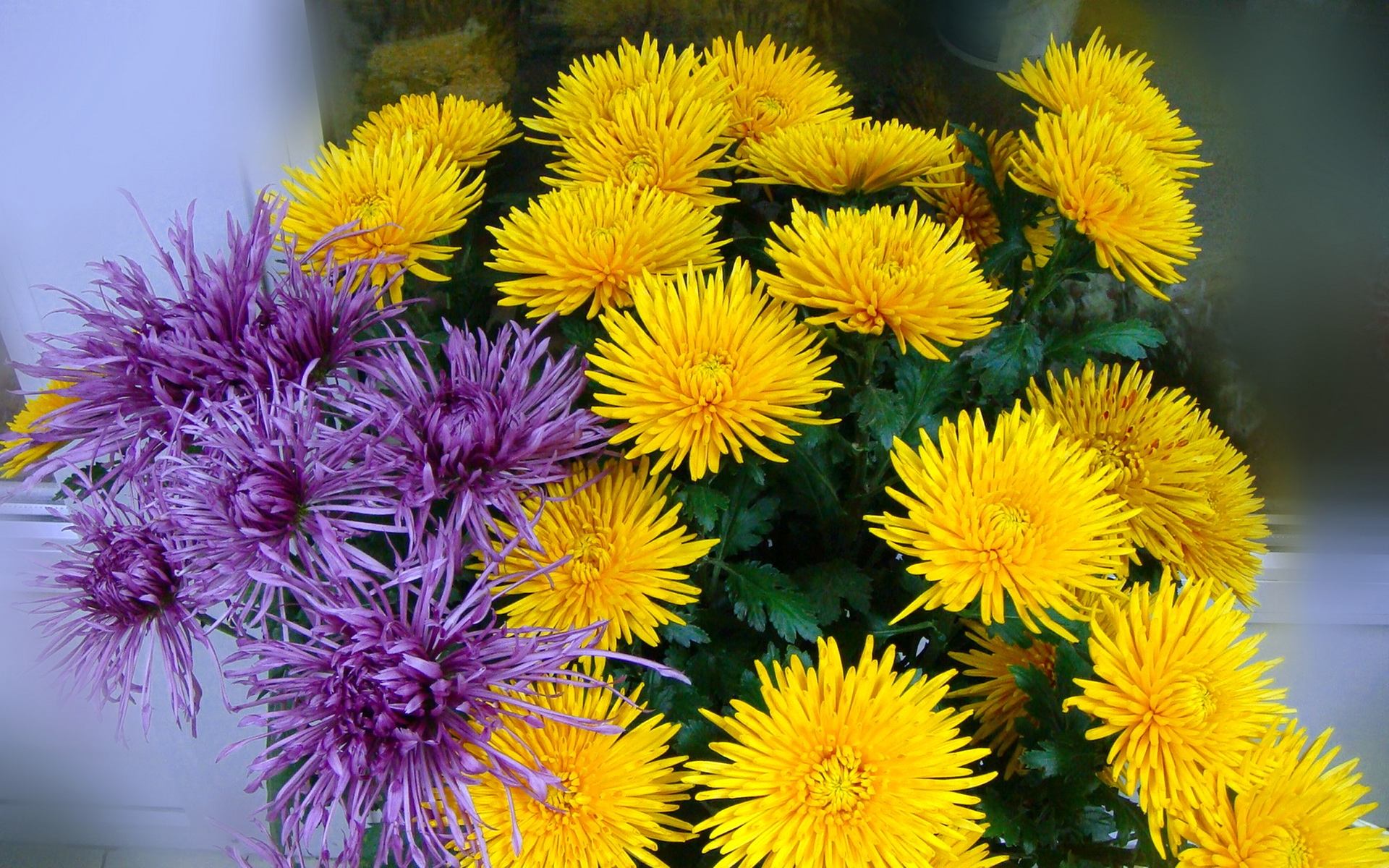
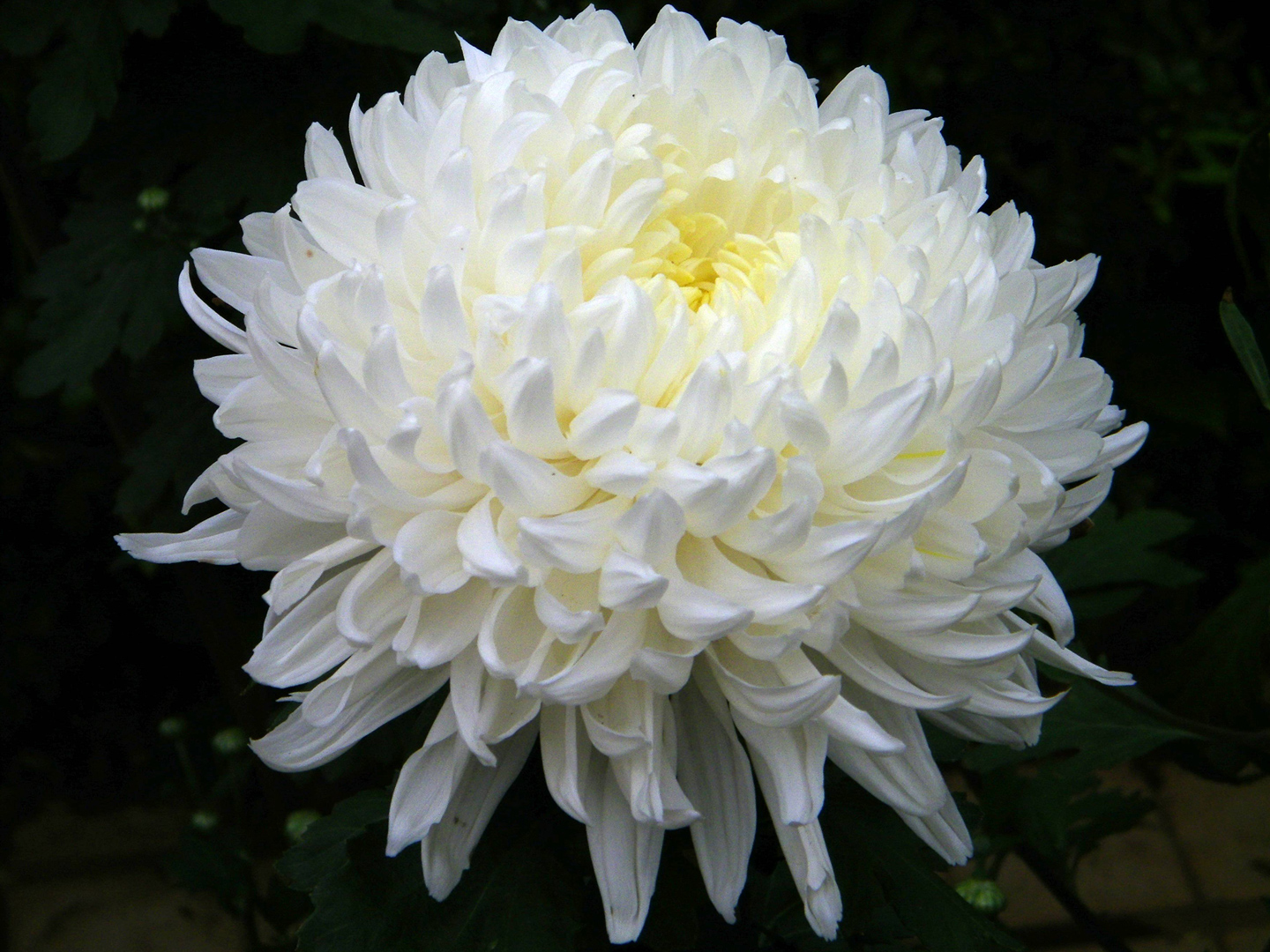
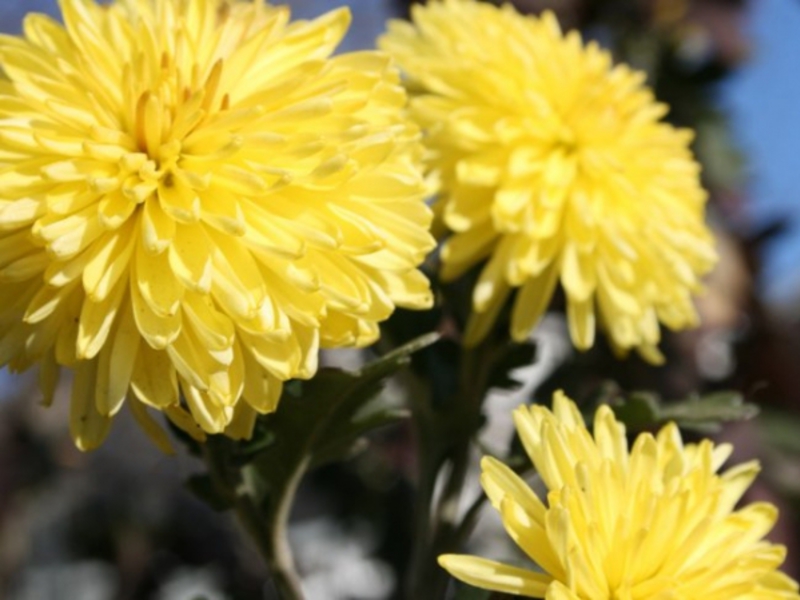
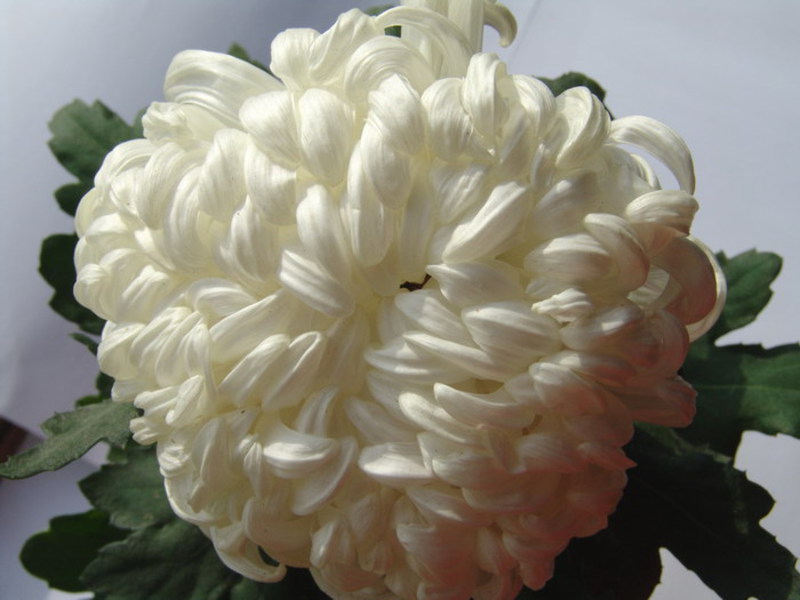
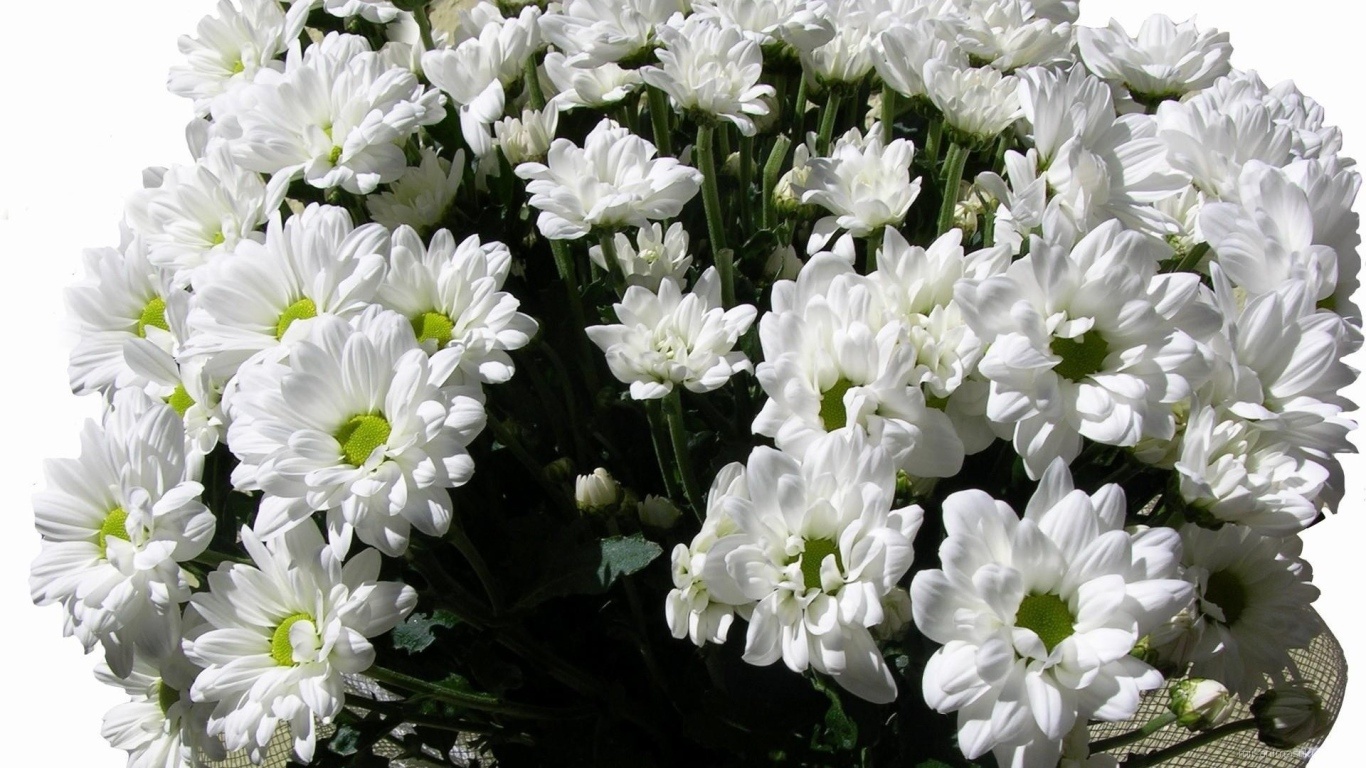
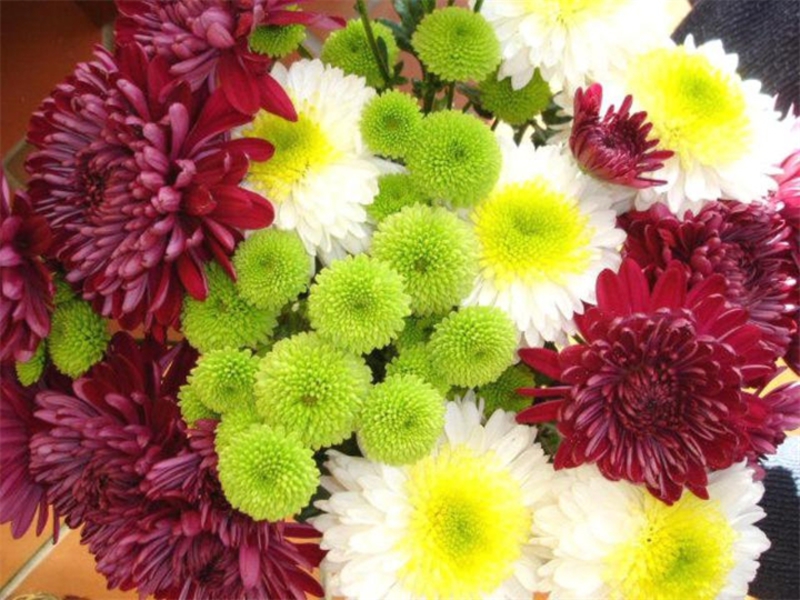
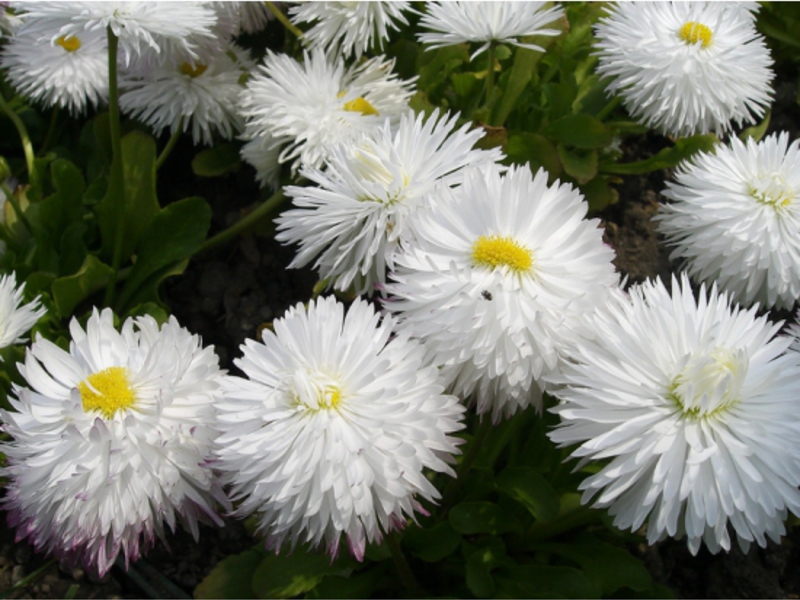
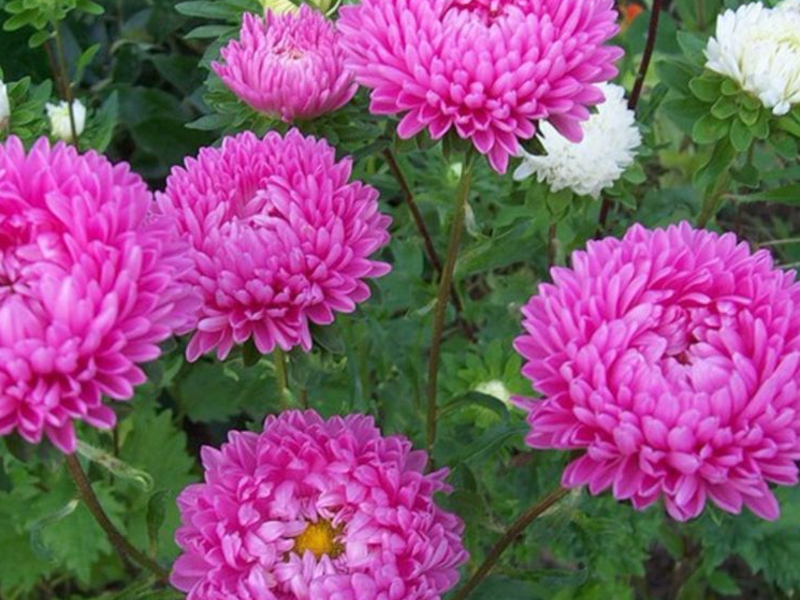
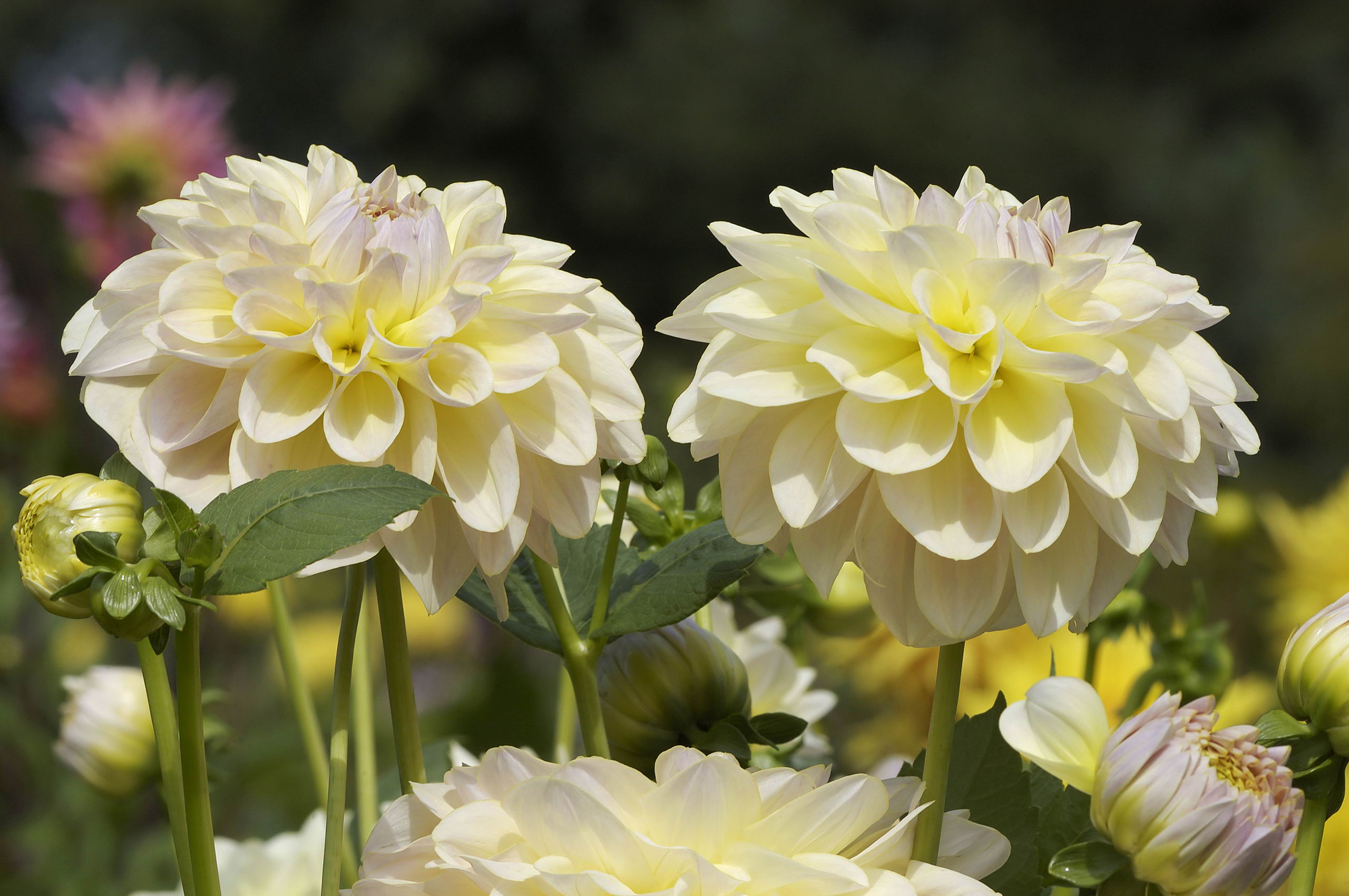
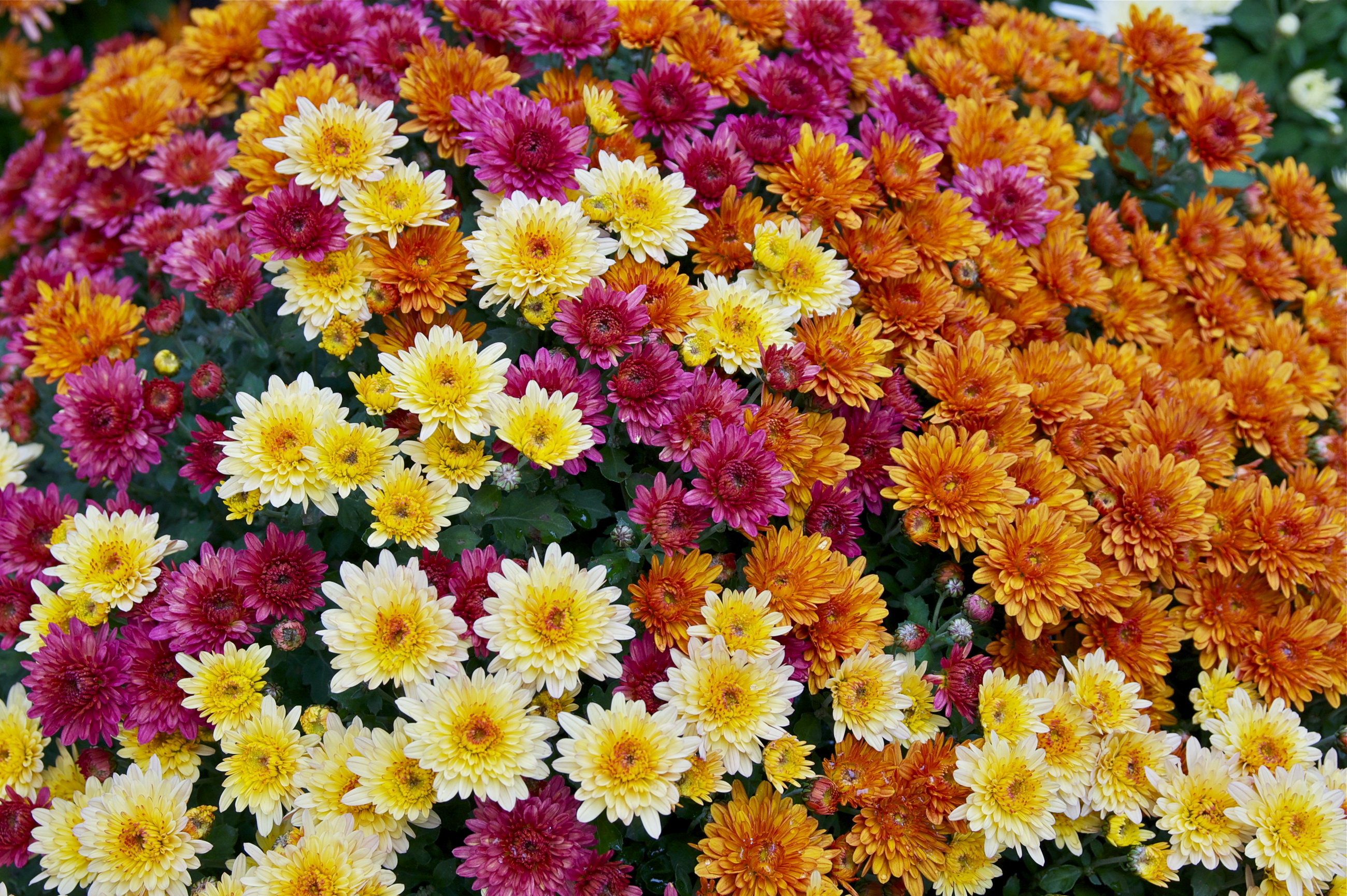

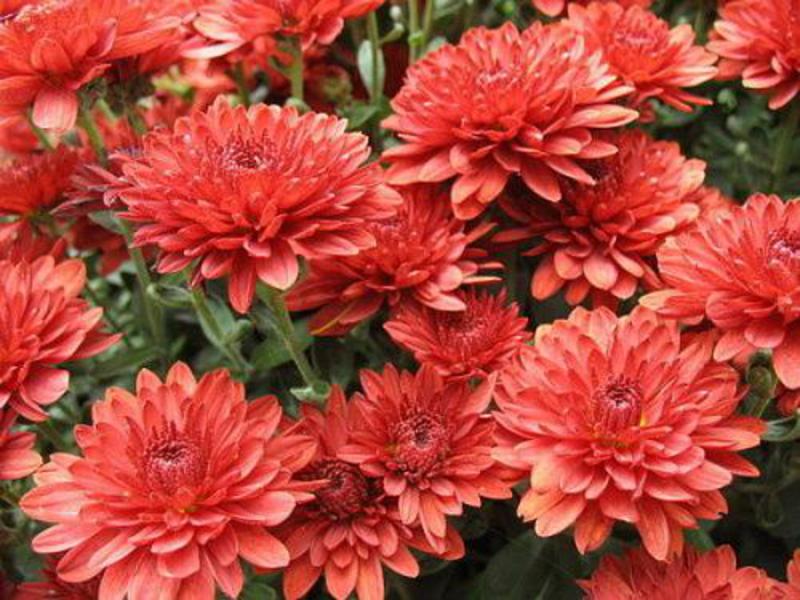
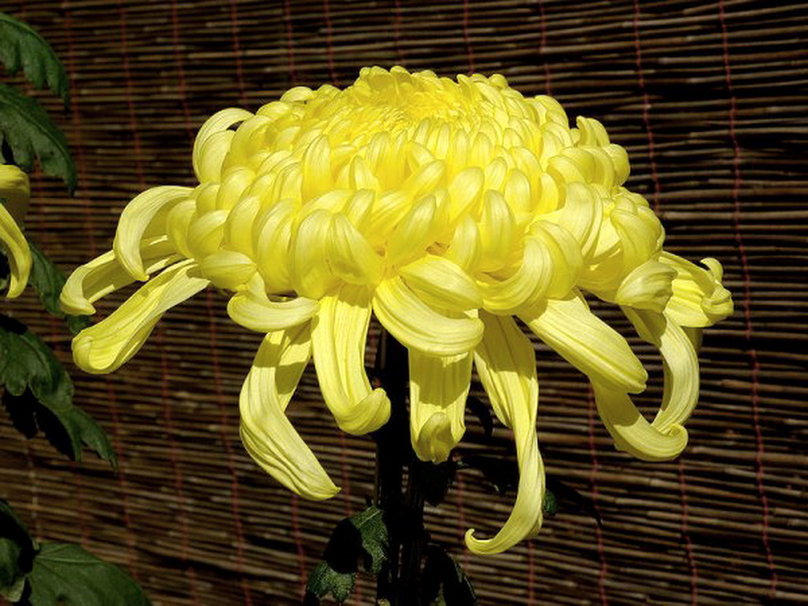
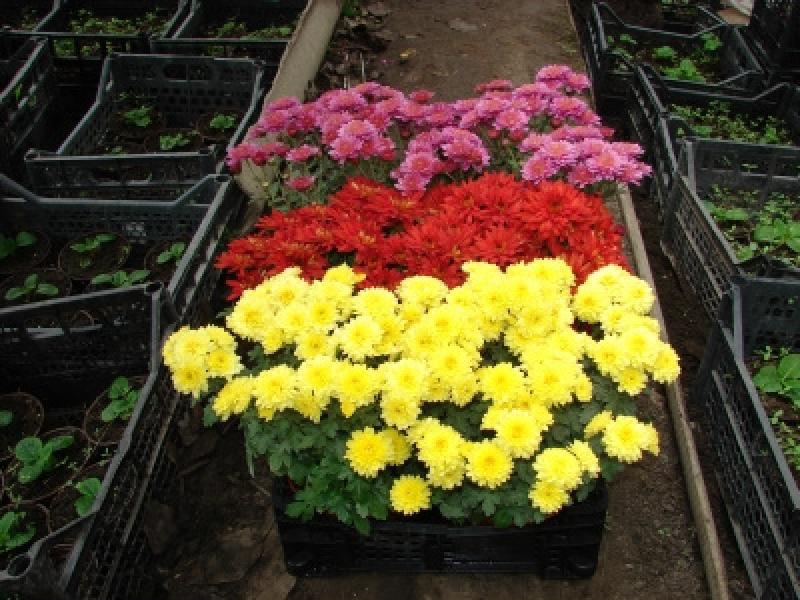

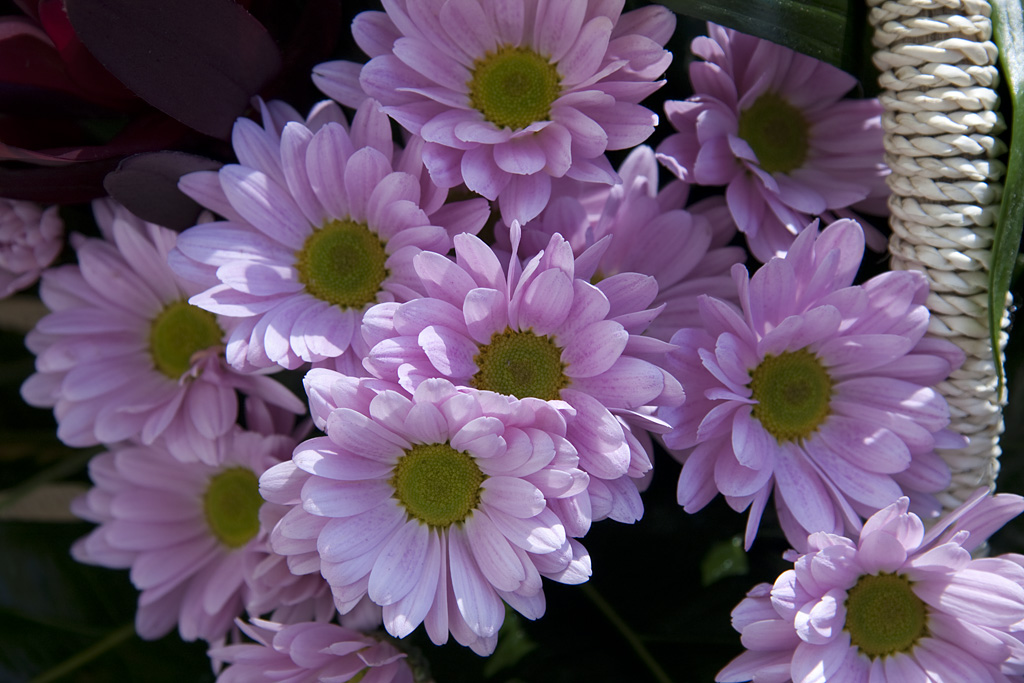
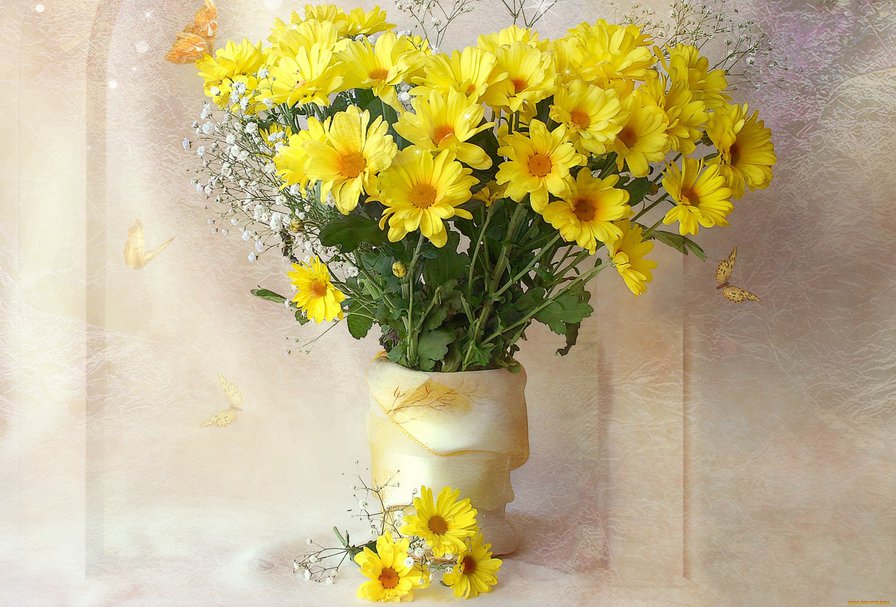
When choosing a chrysanthemum variety, it is important to know what shade and size the flowers will be. In this article we will talk about the propagation of chrysanthemums and caring for them.
Description of chrysanthemum varieties
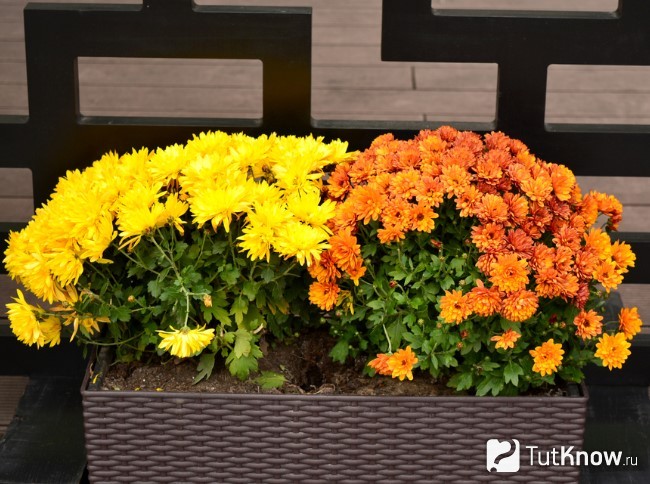
If you like tall chrysanthemums that have large flowers, then you can plant representatives of the following varieties in the garden:
- "Tom Pierce." With spherical flowers with a diameter of 22 cm, which bloom in September. This variety has upper part the petal is red and the reverse petal is orange. The bush can grow up to one and a half meters.
- "Anastasia Green" blooms with green needle-like flowers. The bush can reach a height of a meter. Flowering is later, begins in October, and the variety is not cold-resistant; it requires shelter for the winter.
- "Zembla Lilac" - this chrysanthemum is one of the record holders for flower size. She has terry ones pink color. The height of the bush is up to 90 cm. This plant is grown in the garden, and its potted form from the “Zembla” series is grown at home.
- The Gazelle variety has hemispherical flowers. They are large, up to 14 cm, terry, white. They bloom in mid-August.
- "Alec Bedser" grows up to 70 centimeters. Hemispherical cream-colored flowers bloom up to 14 cm in diameter. This beauty can be seen from September to October.
- 'Golden Fleece' lives up to its name, with yellow-orange flowers in full bloom. The height of the bush is up to 60 cm.
- “Splash of champagne” - this chrysanthemum grows up to 90 cm. It is covered with needle-shaped inflorescences of a light pink hue, and the middle part has a yellowish coating. The blossoming flower reaches a diameter of 8–10 cm. Flowering from October to frost. This variety has excellent winter hardiness.
- “Pink chamomile” also has this invaluable quality - it overwinters well in the ground. The diameter of the flower reaches 6–8 cm with a bush height of up to 90 cm. The variety is early, you can admire the flowering already in September, it continues until frost.
Varieties of Korean chrysanthemum
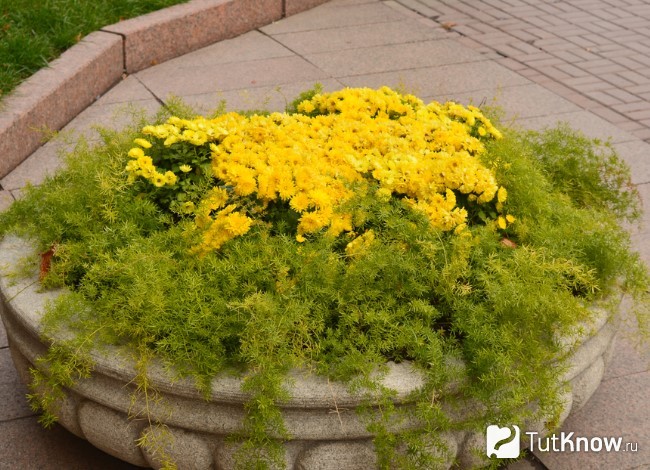
According to their height, Korean chrysanthemum varieties are divided into:
- short;
- medium height;
- tall.
Medium-sized varieties reach a height of 30–50 cm. Here are the varieties of medium-sized Korean chrysanthemum you can plant in your country house:
- "Amber";
- "First Snow";
- "Evening Lights"
- "Alyonushka";
- "Snow White";
- "Bacon";
- "Summer";
- "Pearl";
- "Anniversary".
Growing chrysanthemums from cuttings and seeds
Most often these flowers are propagated vegetative way- by dividing the bush, cuttings or grown from seeds. The last method is most suitable for annual chrysanthemums.
When dividing a bush, young shoots are separated from old shoots in the spring, when the frosts end, or in early to mid-autumn, when the plant blooms, or in the spring after the frosts end. Plant immediately young plant to the place chosen for this.
To propagate a chrysanthemum by cuttings, after it has flowered, bring it for the winter in a cool room where the temperature is no higher than +6°C. By spring, cuttings will begin to grow from this mother bush; they are usually collected in March or April, but can be done this February. A month before cuttings, transfer the mother plant to warm room, where it will be at room temperature. You need to cut the cuttings from the root shoots with a sharp knife; if they grew from the old part of the bush, then these will not work. The cut should be made in the middle of the internode or under the node.
For rooting, prepare a mixture of perlite and a small amount of sand, disinfect with a weak solution of potassium permanganate, plant the cuttings, bury them 2 cm. In two weeks, roots will appear.
When root system Once it has developed sufficiently, the cuttings are planted in a permanent place in early May.
Chrysanthemums are grown from seeds in March. The seeds are sown in a tray with moist, loose soil, covered with a plastic bag and removed to a place where the temperature is +24–+28°C. A month later, the seedlings are planted, and in mid-May they are planted in a permanent place.
Caring for chrysanthemums

Water them in open ground about once a week; if the weather is hot, then you can do this once every three days. For better flowering, it is necessary to periodically feed chrysanthemums. After the cuttings take root, water them after three weeks. nitrogen fertilizer. Repeat this feeding after 10 days. When buds appear on the plant, it is necessary to add phosphorus-potassium fertilizers. In the same way, you need to feed chrysanthemums grown from seeds, as well as those separated from the mother bush.
To form dense bushes, you need to pinch the growing points of the chrysanthemum twice a season. If you live in a region with cold winters, then make a shelter for chrysanthemums in mid-late autumn. To do this, first cover the bushes with soil, mulch with peat, then cover the bushes with spruce branches.
The chrysanthemum grows in one place for three years, then it must be transplanted to another. Typically, the method of dividing the bush is used for this.
Chrysanthemum grows well in a warm, sunny place, in loose, slightly acidic soil rich in organic matter. It does not tolerate excess moisture, so expanded clay should be poured into the dug hole to avoid rotting of the roots. You can also use coarse sand for this.
Plant the flower in the prepared place, mulch the root zone with peat. For better growth root system the morning after watering, loosen the soil surface. If you do everything correctly, at the end of summer, when many plants are no longer so decorative, chrysanthemum will delight you with bright flowers and will become a worthy decoration of the site.
Learn more about growing chrysanthemums from this video:

